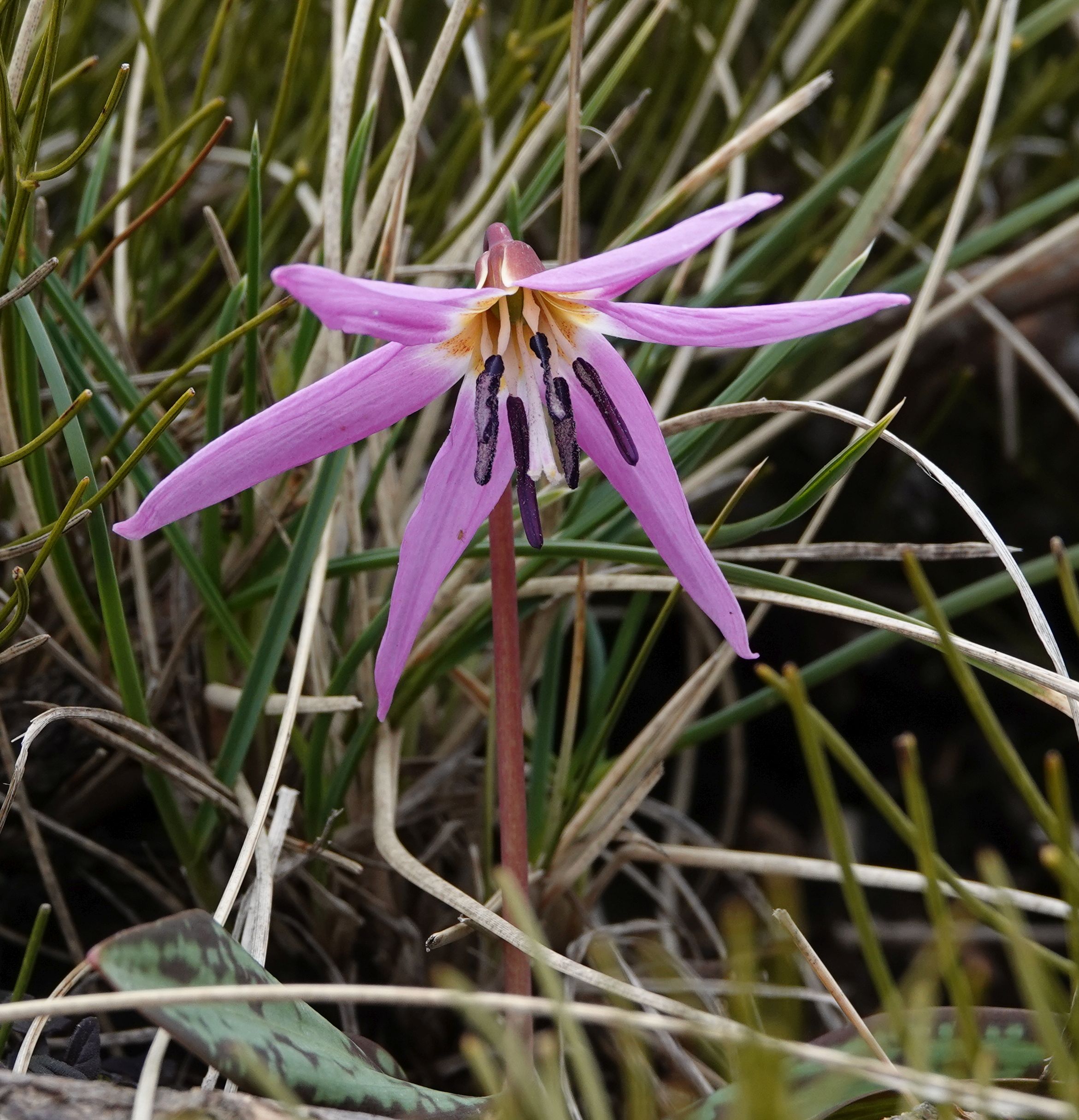
Croatia: Spring Flowers of the Dalmatian Coast
Saturday 22 April – Saturday 29 April 2023
Our exploration of the flora of the Dalmatian coast and its near-hinterlands under the able stewardship of Başak and Chris Gardner began the morning of 22 April, as participants were fetched over the course of the day from Dubrovnik, Cavtat and the airport. Veterans of prior MPG adventures included Juliet Blackburn, David Foreman, Joanna Fortnam, Jane Furse, Nerissa Guest, Mary and Kosta Komodore, Cathy Rollinson and Graham Rollinson, while Chris Earl, Sally Ishizaka, Margherita Janowski and Marcela Toro were on their first tour.
Summary
– Chris and Başak are superb guides: kind, joyfully enthusiastic, exceptionally knowledgeable, well organized and efficient, and endlessly helpful and tolerant.
– The group gelled quickly and congenially. A wonderful group of shared passions and interests.
– Even the most expert and experienced botanists found new species, biomes and variants to get excited about.
– Our quarry: many terrestrial orchid species, variants and hybrids, fritillaries, cyclamen, and higher altitude or colder-weather bloomers: dogtooth violets, narcissus and helleborine.
Day 1 Arrival Dubrovnik
We headed south of the airport toward Montenegro, exploring fields between the coast and the mountains finding many orchids (including Anacamptis morio and Ophrys sphegodes), Fritillaria messanensis, Aristolochia longa, Ranunculus millefoliatus, Erica arborea, plenty of Muscari neglectum, and the hemiparasitic Melampyrum. In our last stop we found Anacamptis laxiflora. Overnight in Dubrovnik.
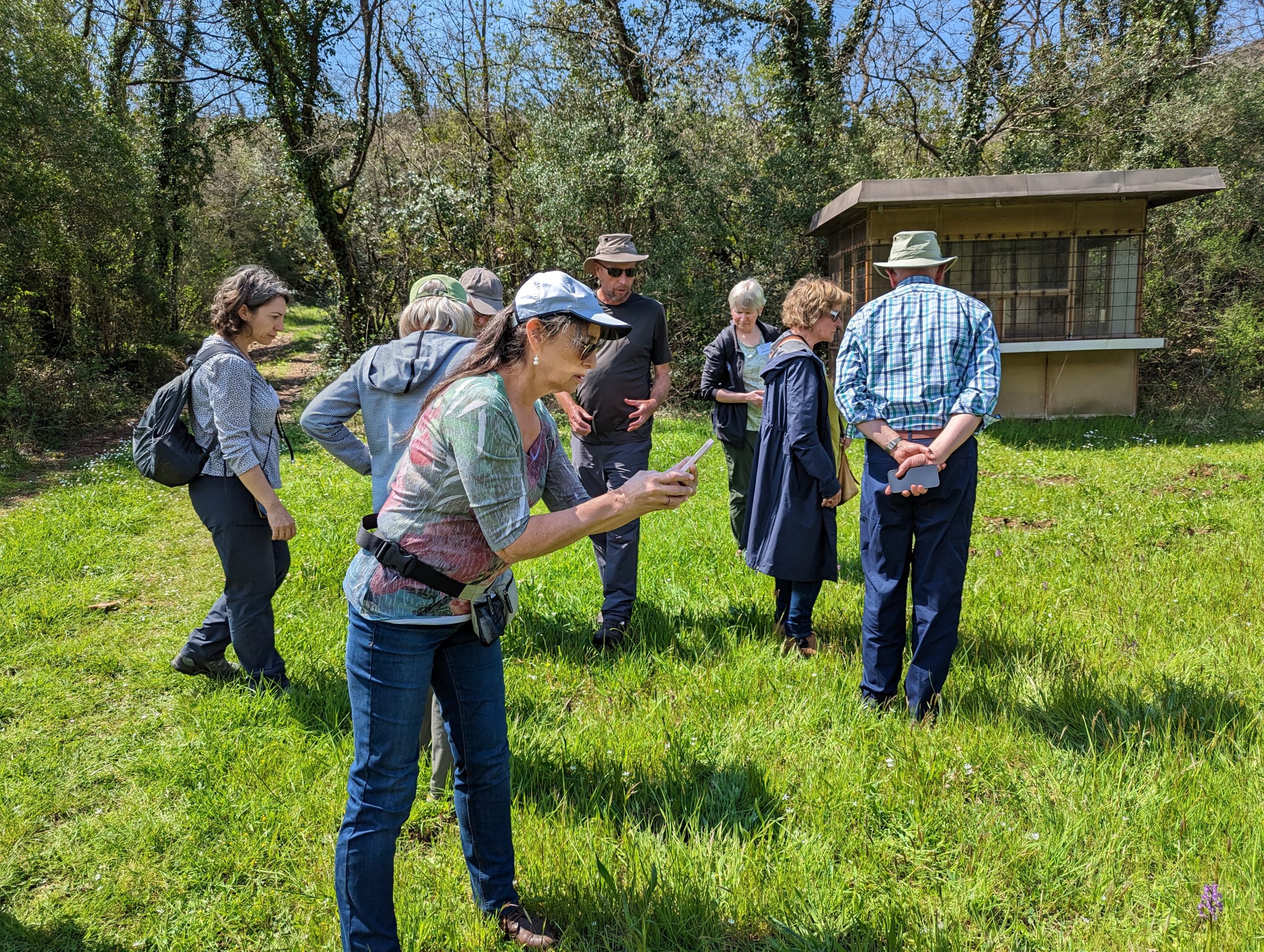
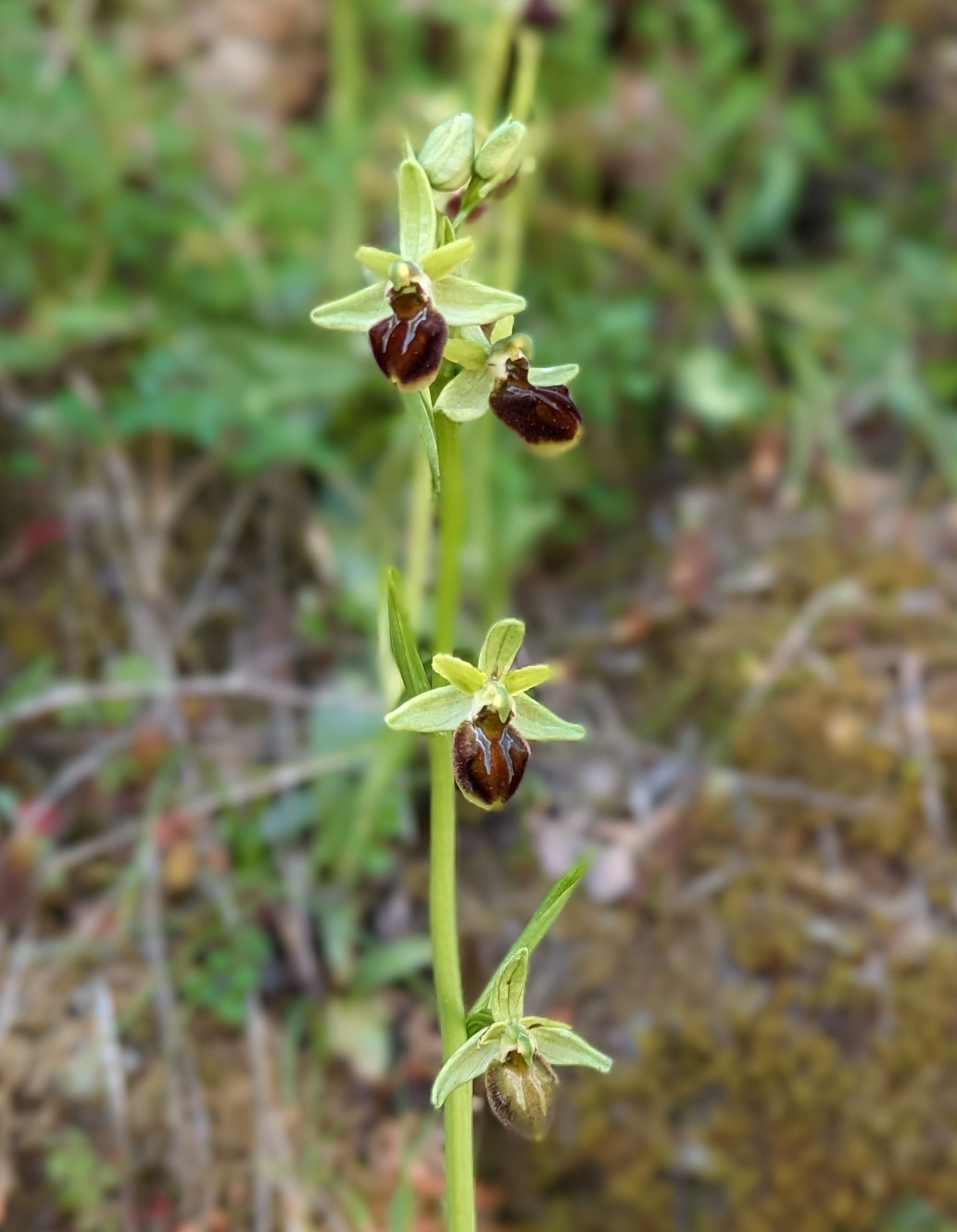

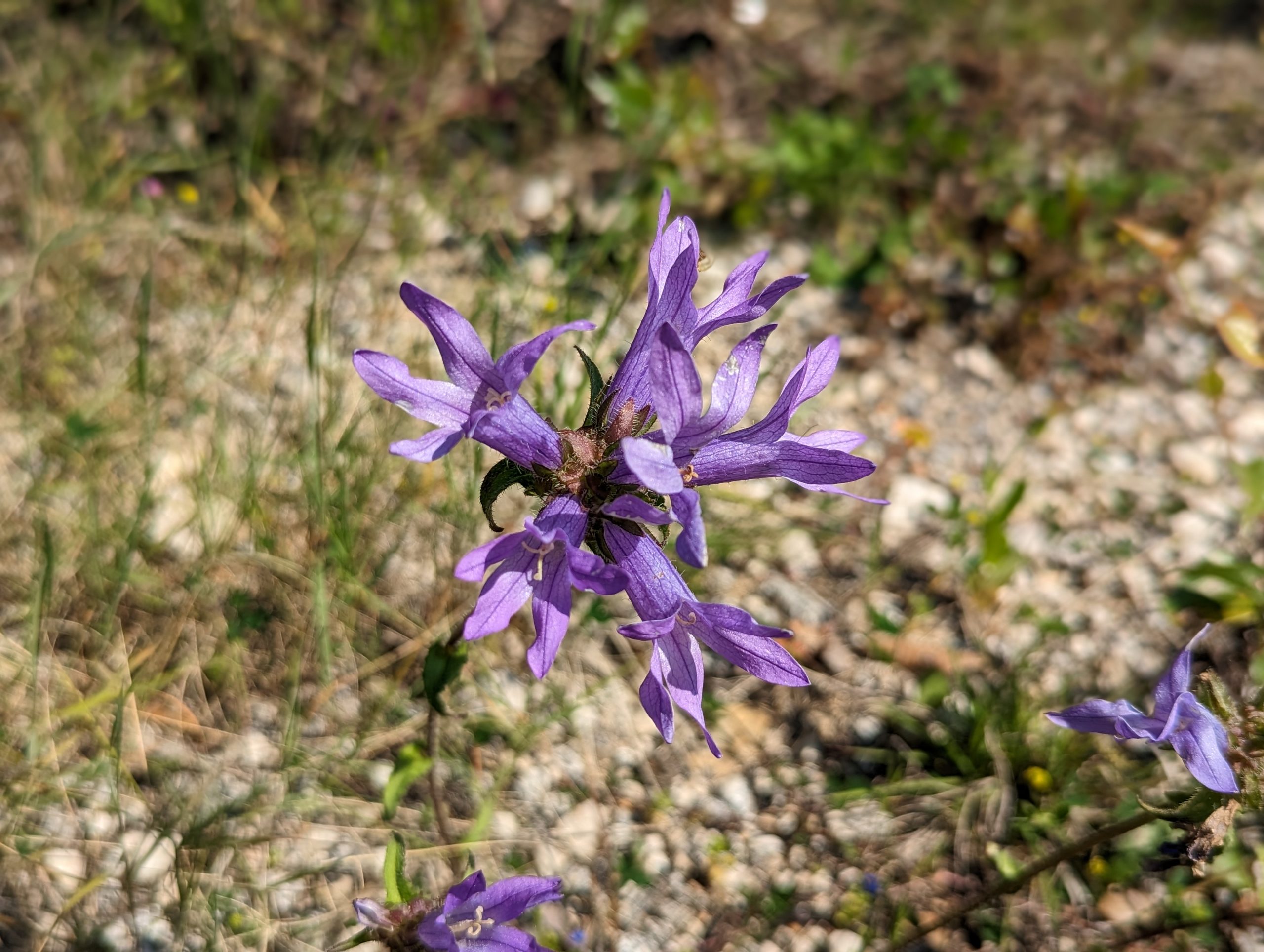
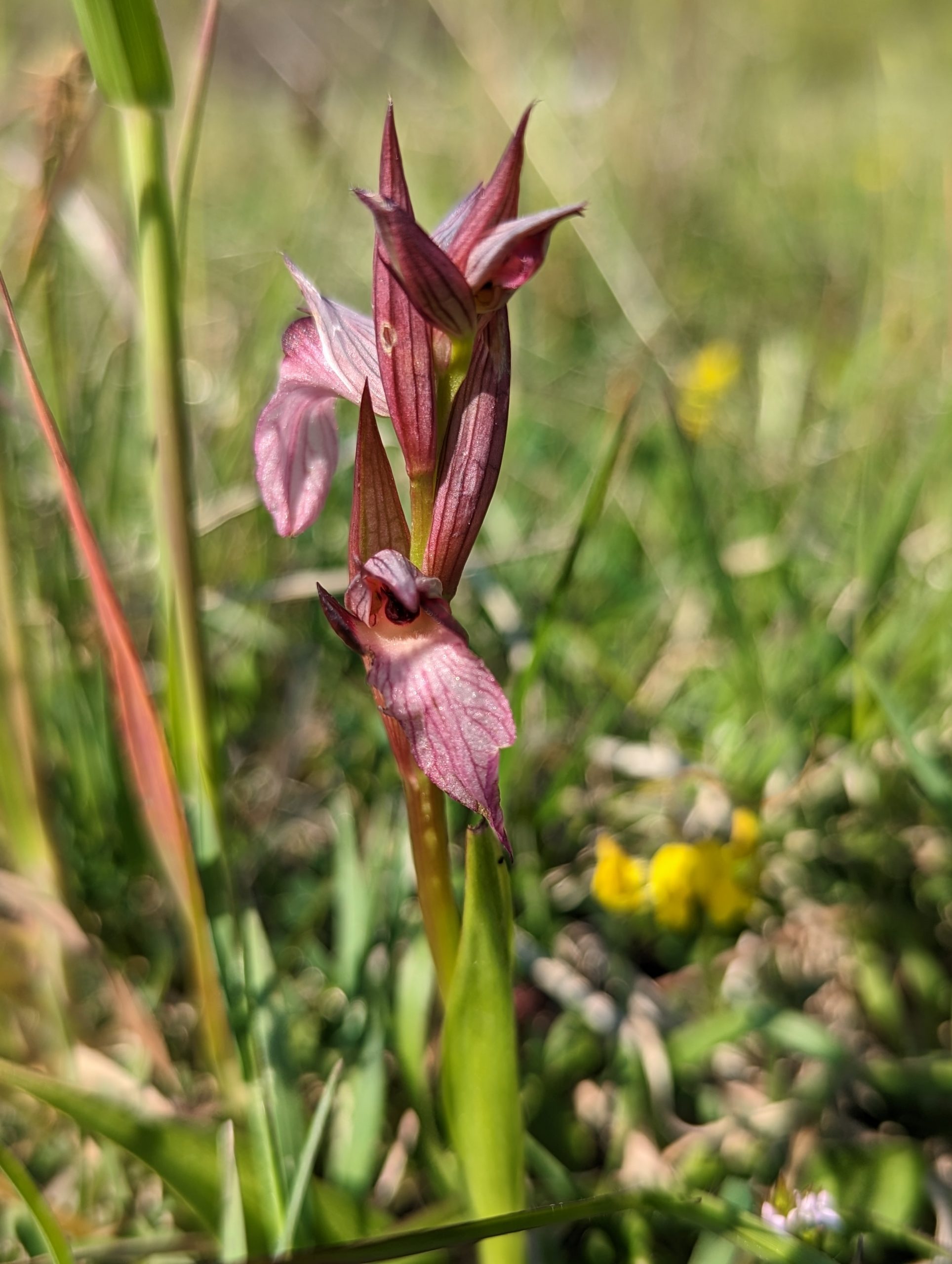
Day 2 Orchids of Dubrovnik
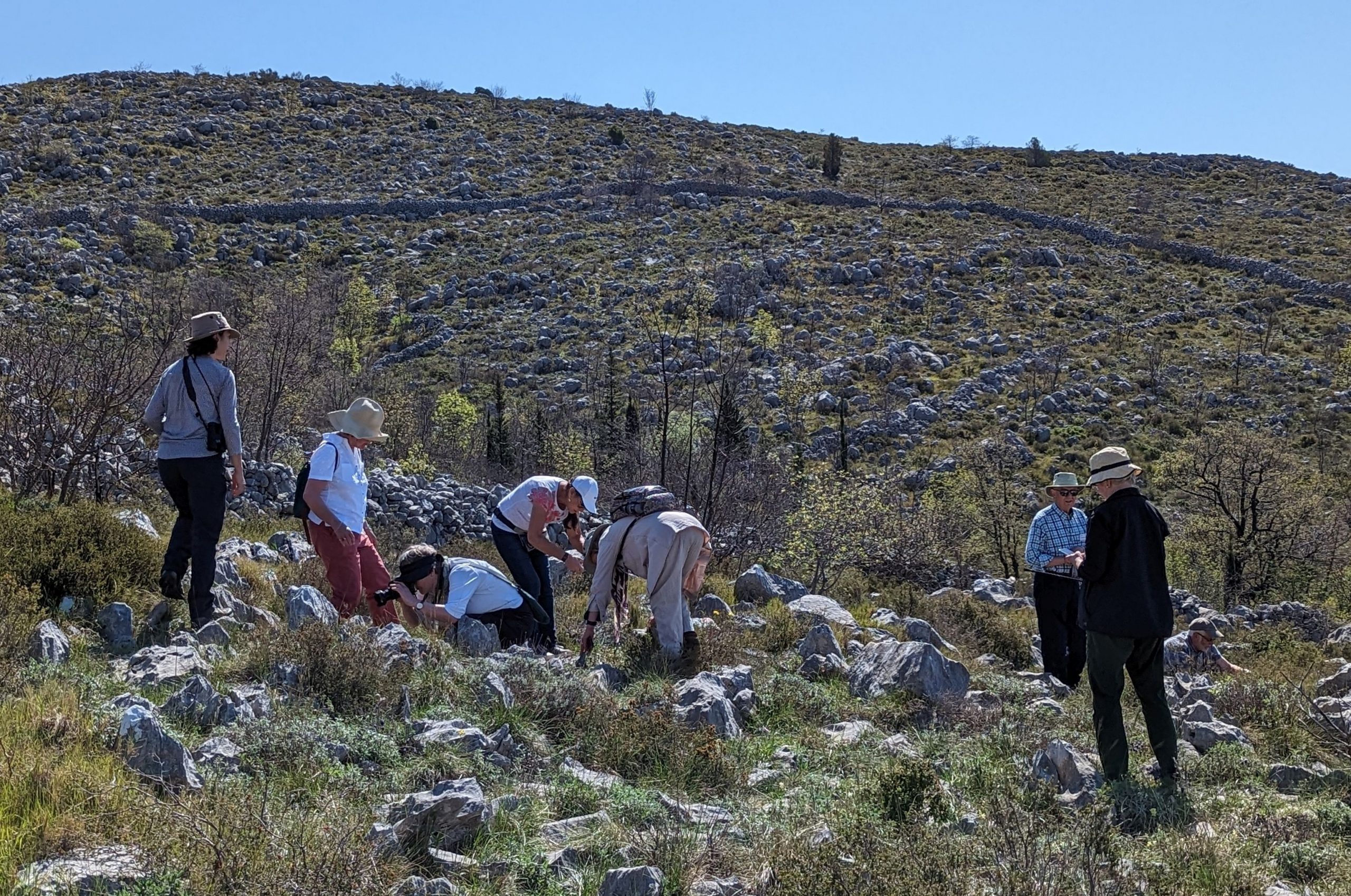
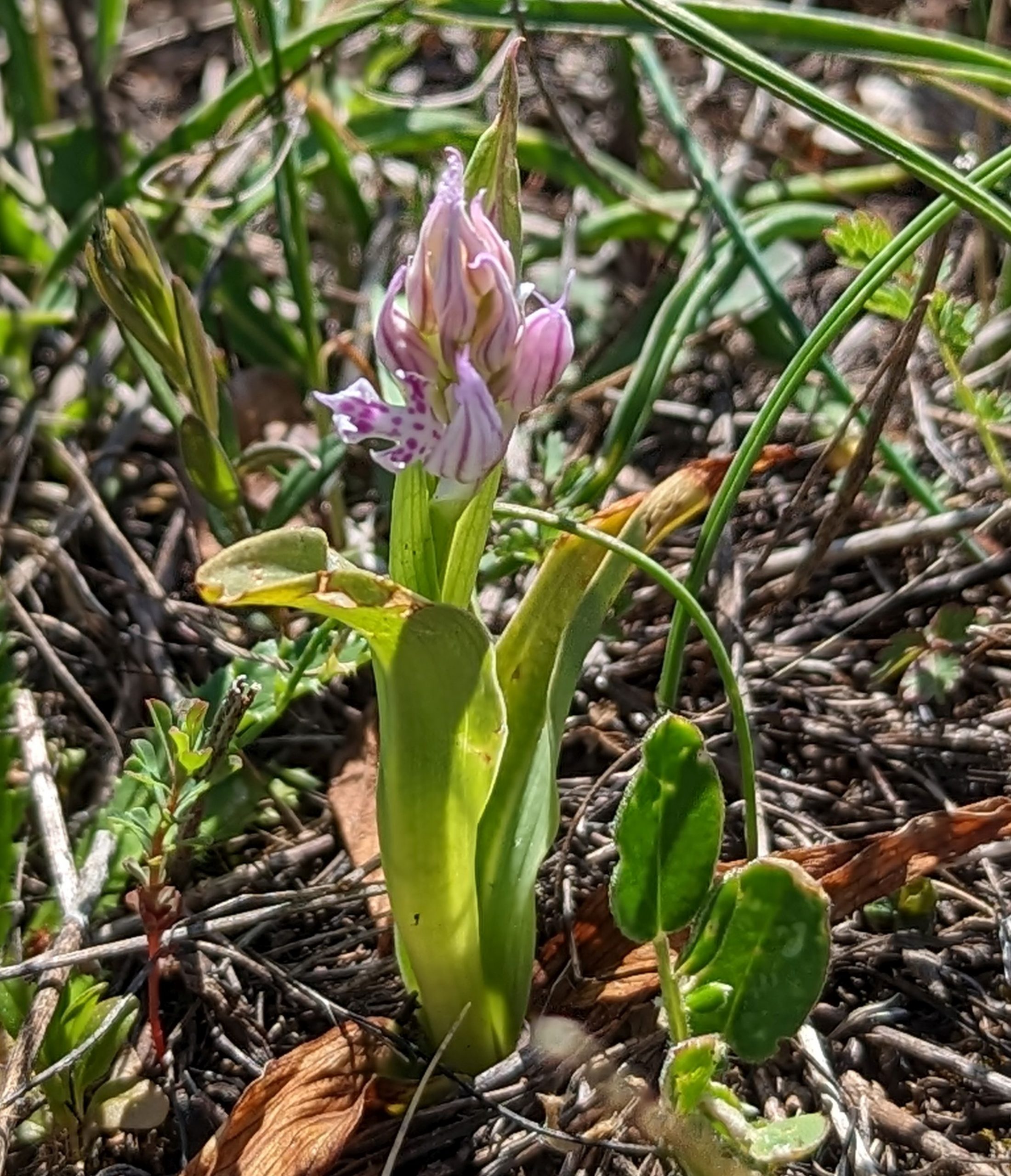
Today we headed about 50 km north of Dubrovnik to hunt not only for some new orchid species, but also for hybrids between Ophrys simia and O. anthropophorum. (The plants seem to be ahead of the genetic engineers in hybridizing humans and monkeys.) Many suspected natural hybrids were found. Other orchids included Orchis pauciflora, Ophrys bertolonii and Neotinea tridentate. Also decorating the landscape were various Asphodeline species, Fumana arabica, Pistacia terebinthus and P. lentiscus, Geranium lucidum, Euphorbia myrsinites and E. characias, specimens of campanula including Edraianthus serpyllifolius. We returned to Dubrovnik mid-afternoon to allow exploring of the old town.
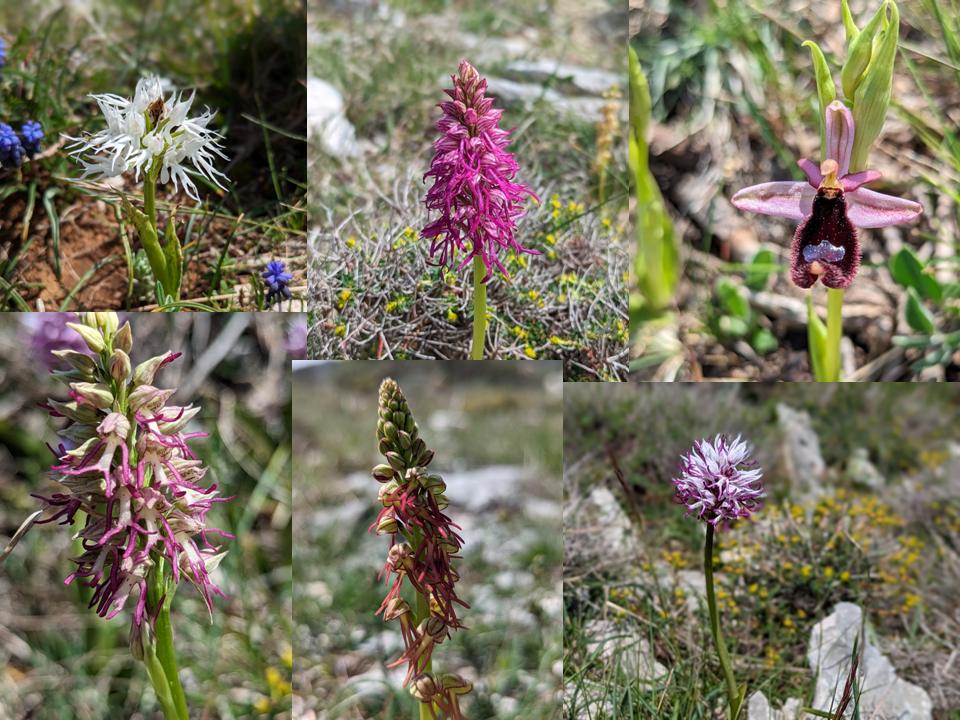
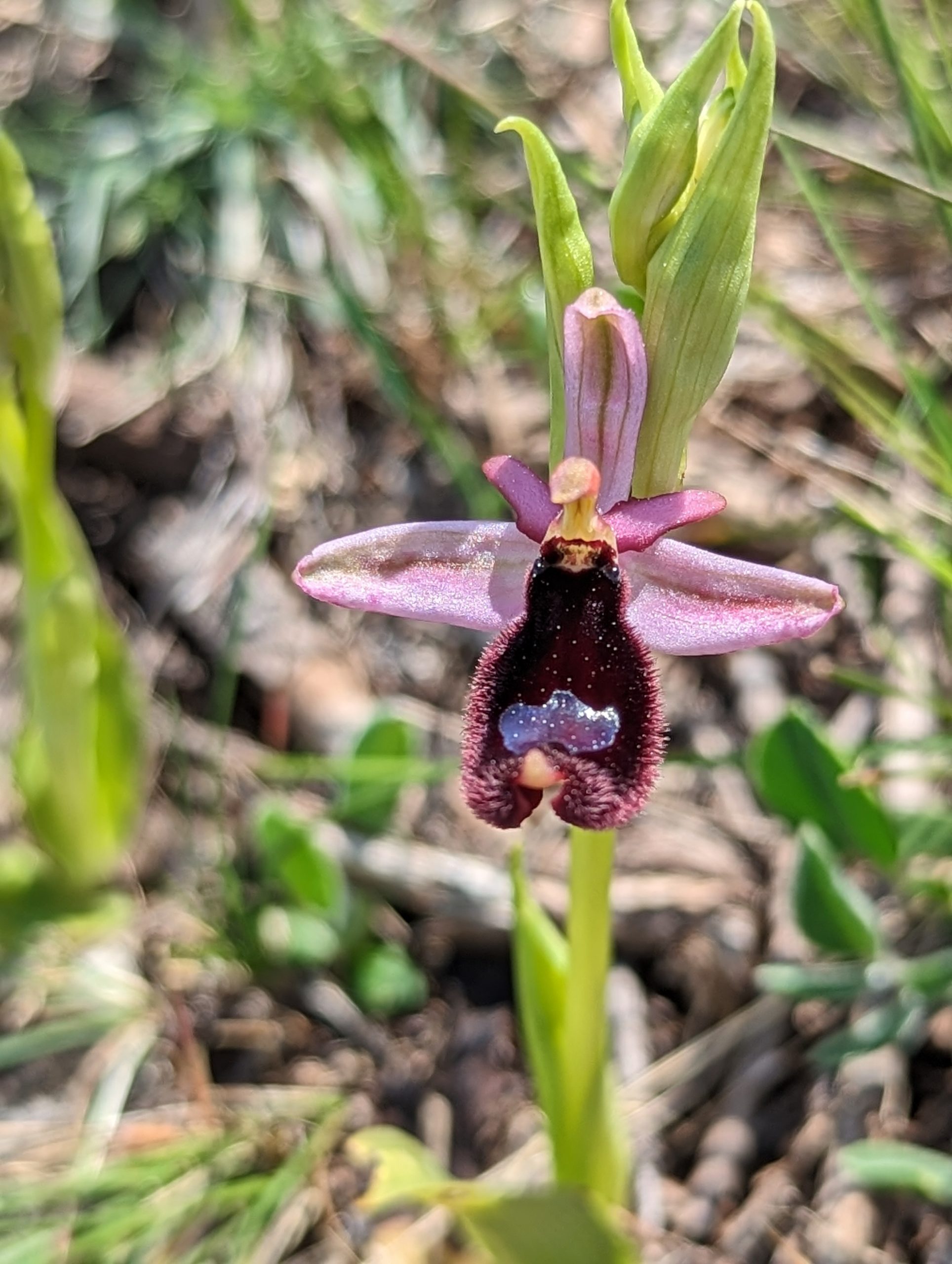
Day 3 Orchids of Pelješac
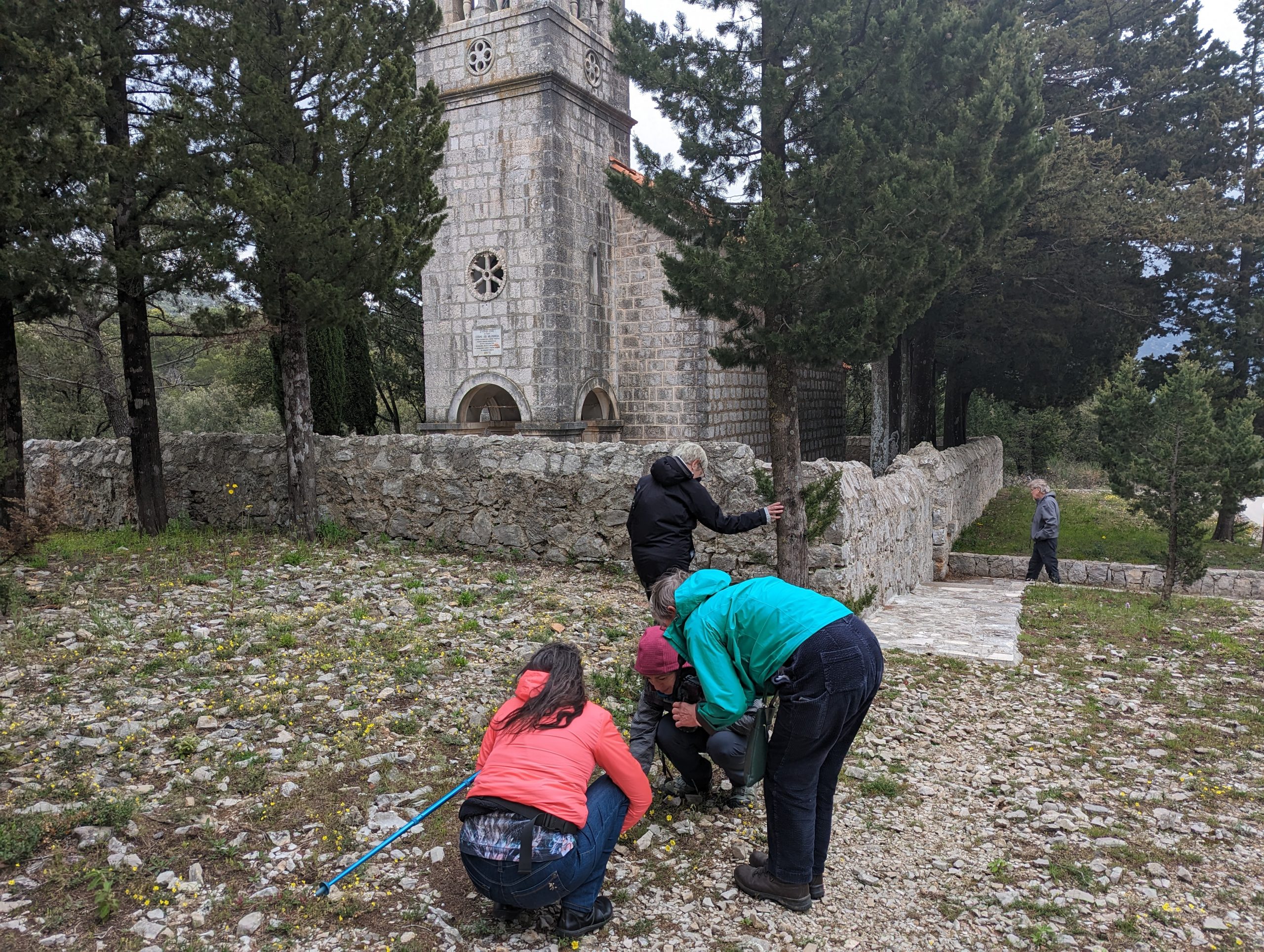
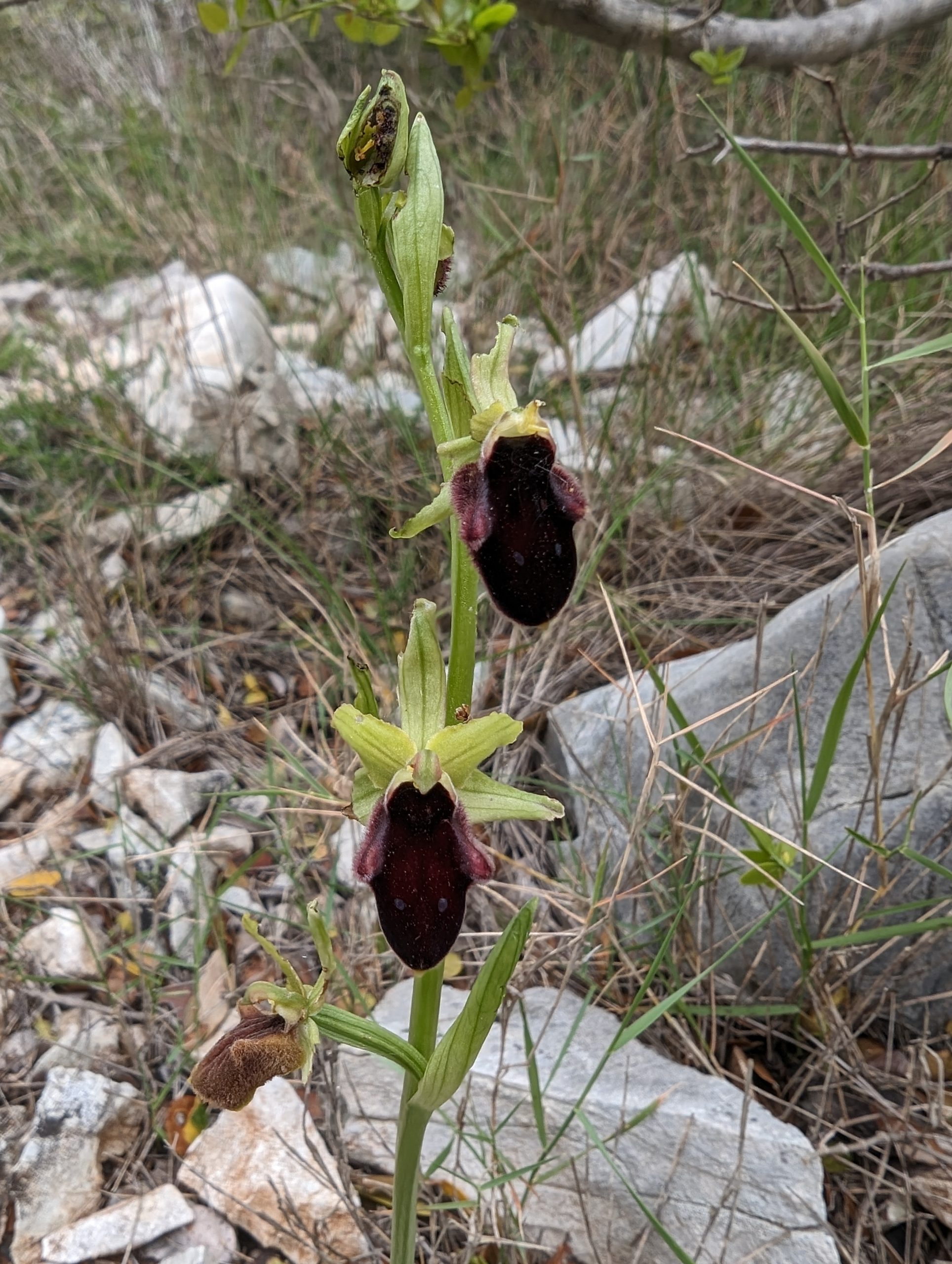
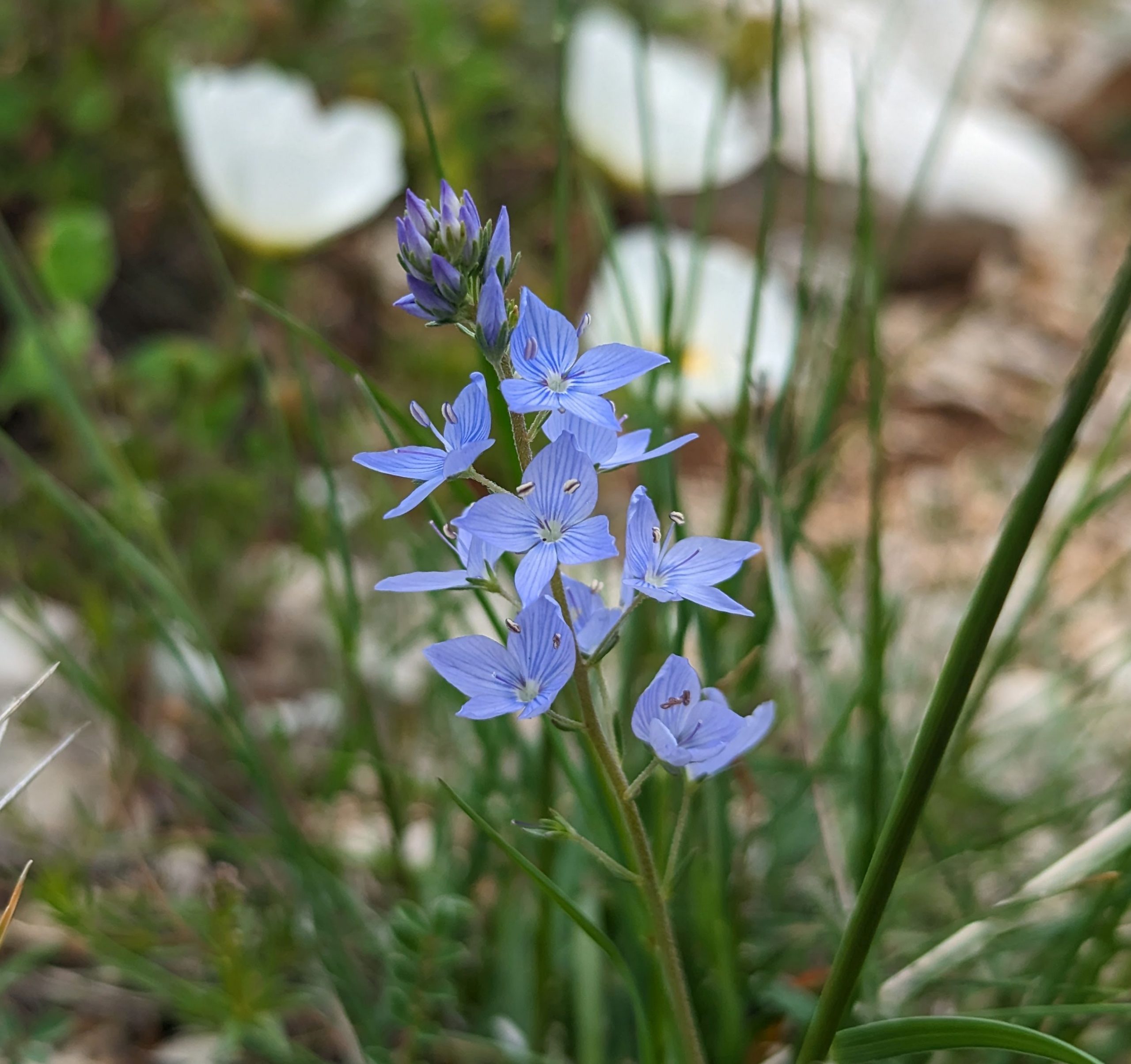
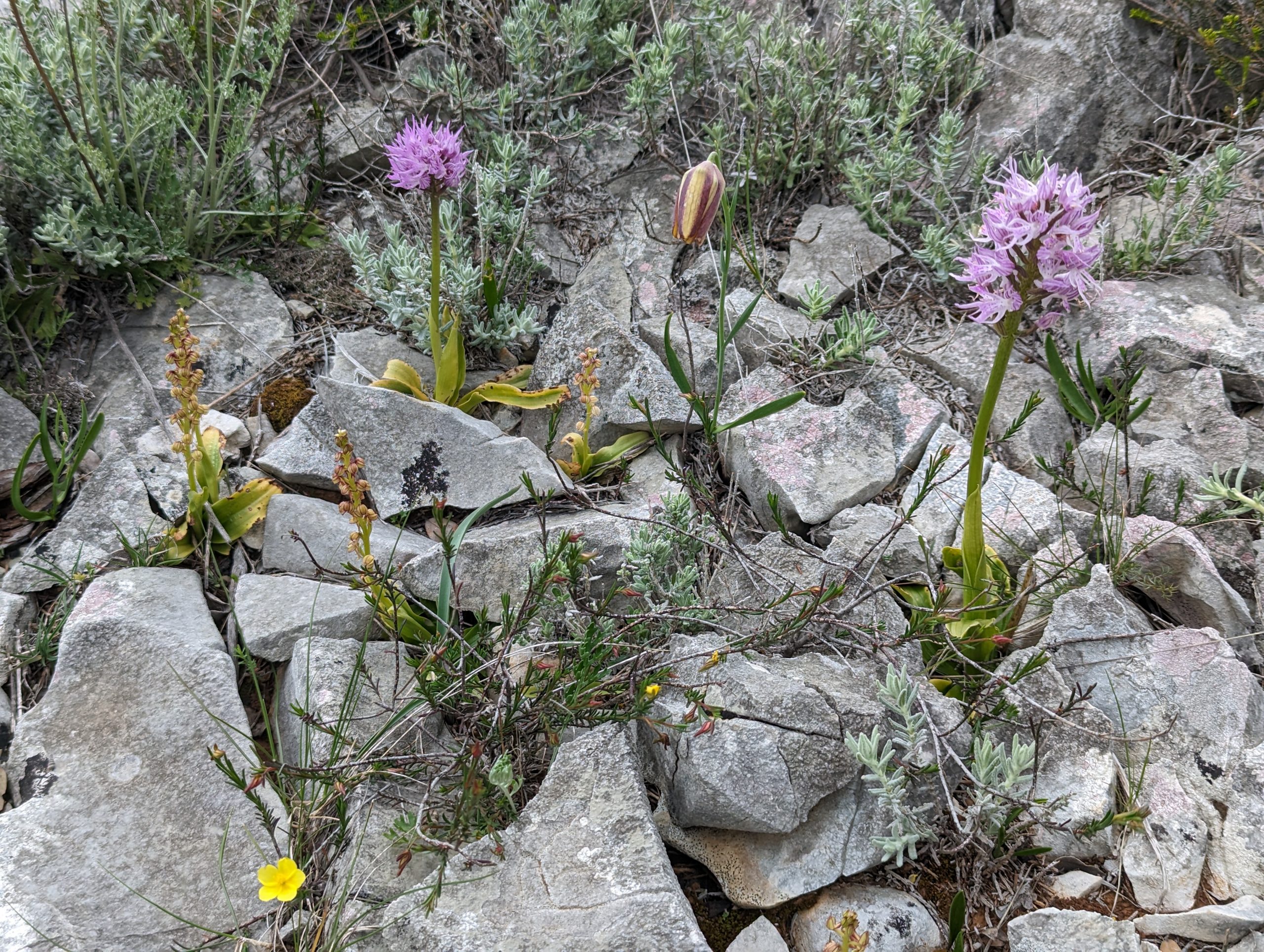
Monday we took off for the northern end of the long Pelješac peninsula, dotted with many small tourist lodgings and restaurants but consisting mostly of forested hillsides. At our first stop, a huge concrete Yugoslavian memorial to WWI dead, we found Edraianthus graminifolius. Our next stop was a 17th century church near Gornja Vrućica with Arabis verna, A. turritis and Lysimachia nummularia. Our next stop at a high overlook had fritillaries, Cistus, Prasium majus, Polygala, Veronica, and Ophrys scolopax. Our lunch stop close to the coast offered Gladiolus, poppies, Campanula lingulata, Allium roseum, Arbutus unedo, Ophrys lutea and Serapias parviflora. Although rain had been in the forecast all day, the precipitation held off until we were driving to Ploce at the end of the day. We crossed the new bridge to the mainland, spending the night in a hotel that felt a bit sad, though we admired the single staff member who checked us in and then seemed responsible for all other jobs, including serving us dinner. According to our botanical debrief before dinner, we had seen 16 species of orchid at this point.
Day 4 Mount Biokovo
Ears popping, we drove further north and inland to the Biokovo mountain range, the second highest mountains in Croatia, rising to 1500 metres. Once we had passed through dense beech forests, depending on which side of the van one was on, and which curve we were negotiating, we could look down on the coastline far in the distance, or into Bosnia. There was plenty of snow left at the higher elevations. Our first mission was to find dogtooth violets – Erythronium dens-canis – in flower. We also saw Draba bruniifolia, Corydalis and Narcissus. The bravest members of the group not prone to vertigo ventured out on the Biokovo Skywalk, which extends over a high precipice, with clear glass paving. After lunch we went down the mountain, and then up another farther north, in search of tulips. They were duly identified, along with Primula veris, Lithospermum, Paronychia, Senecio vernalis, Globularia cordifolia, and our one orchid at this level, Cephalanthera longifolia. We were also surprised to find patches of Cyclamen repandum in bloom. We stayed in a harbourside hotel in the resort town of Makarska; after midnight the wind kicked up and lasted until the next morning.
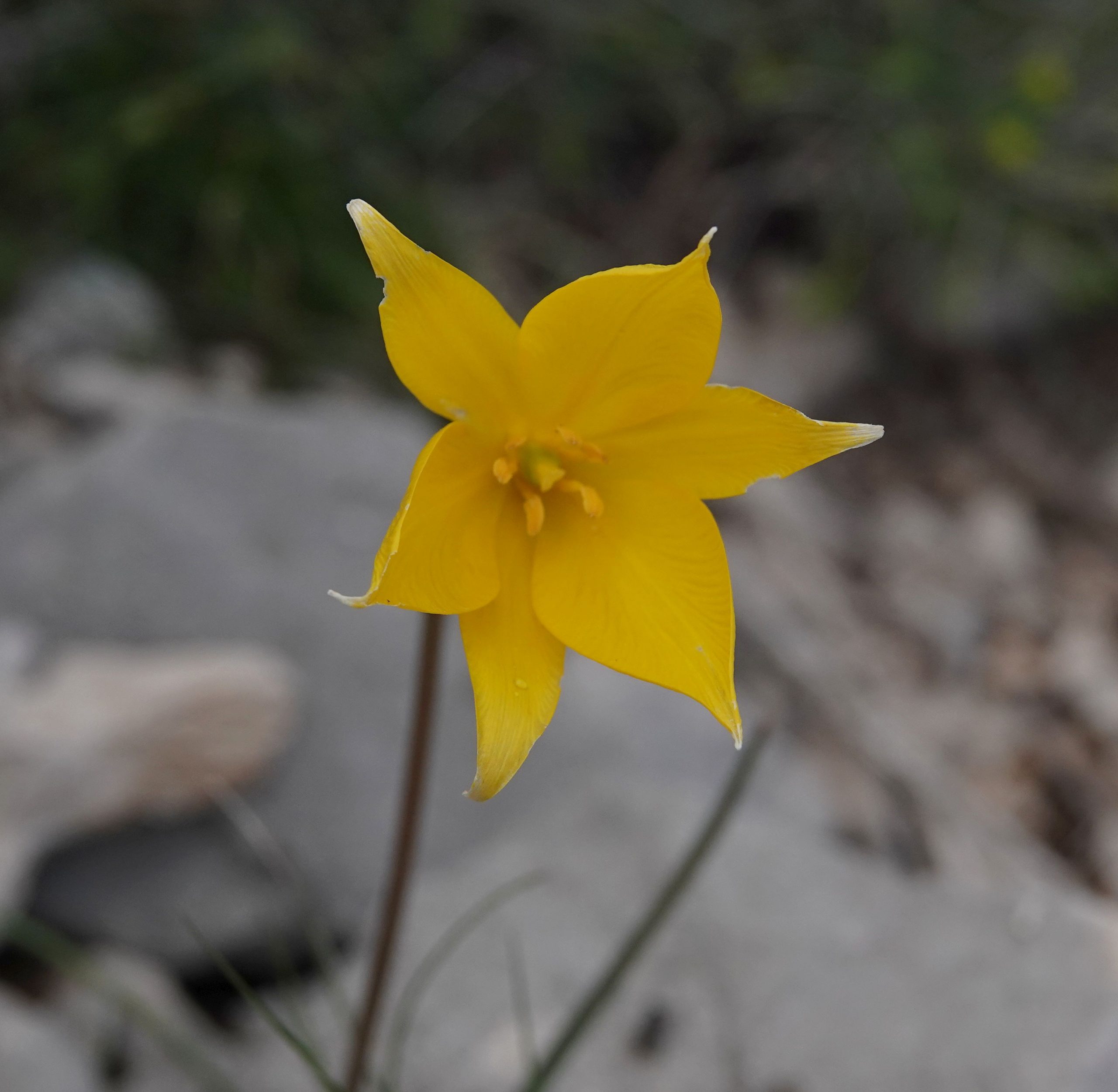
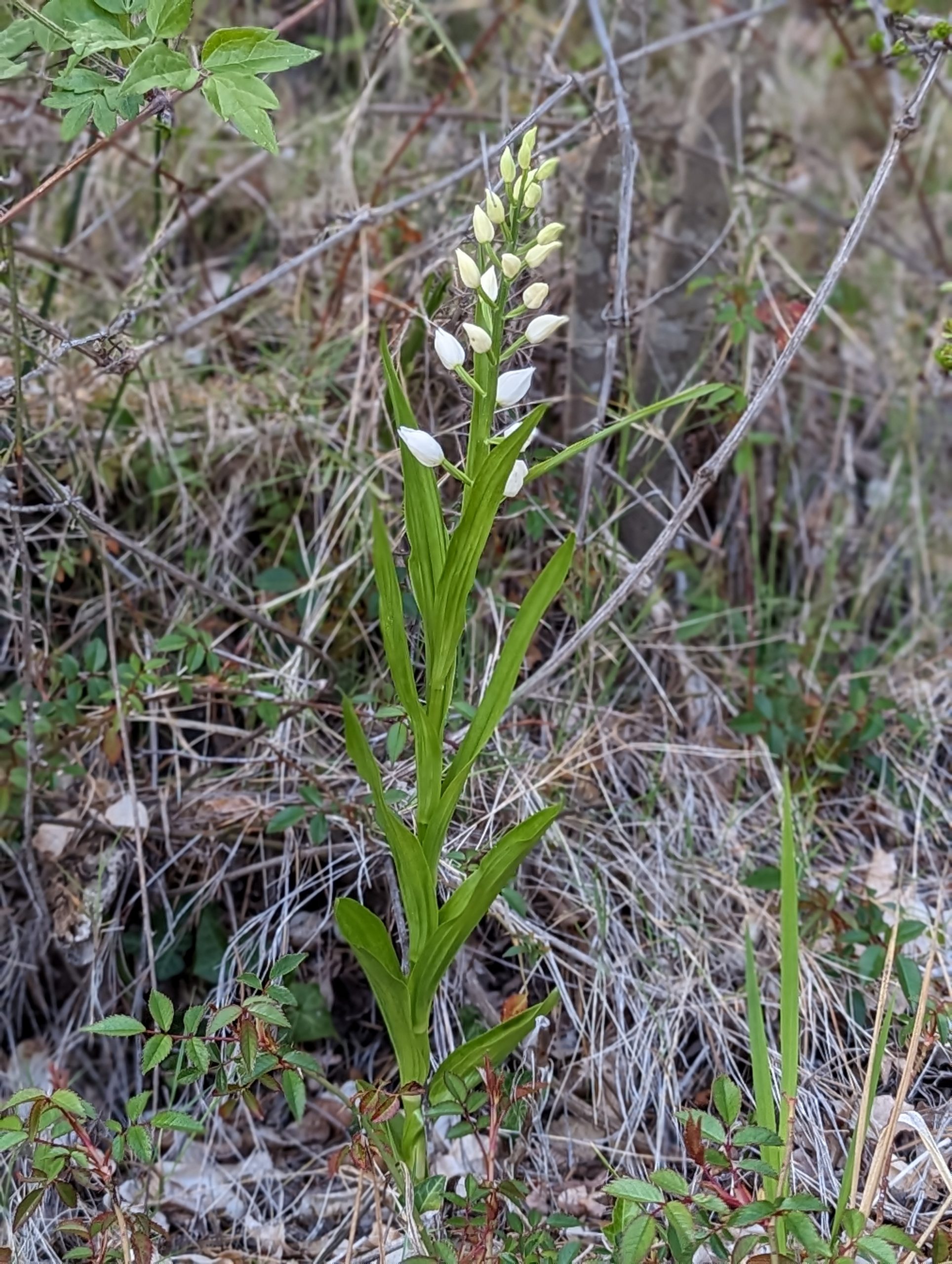
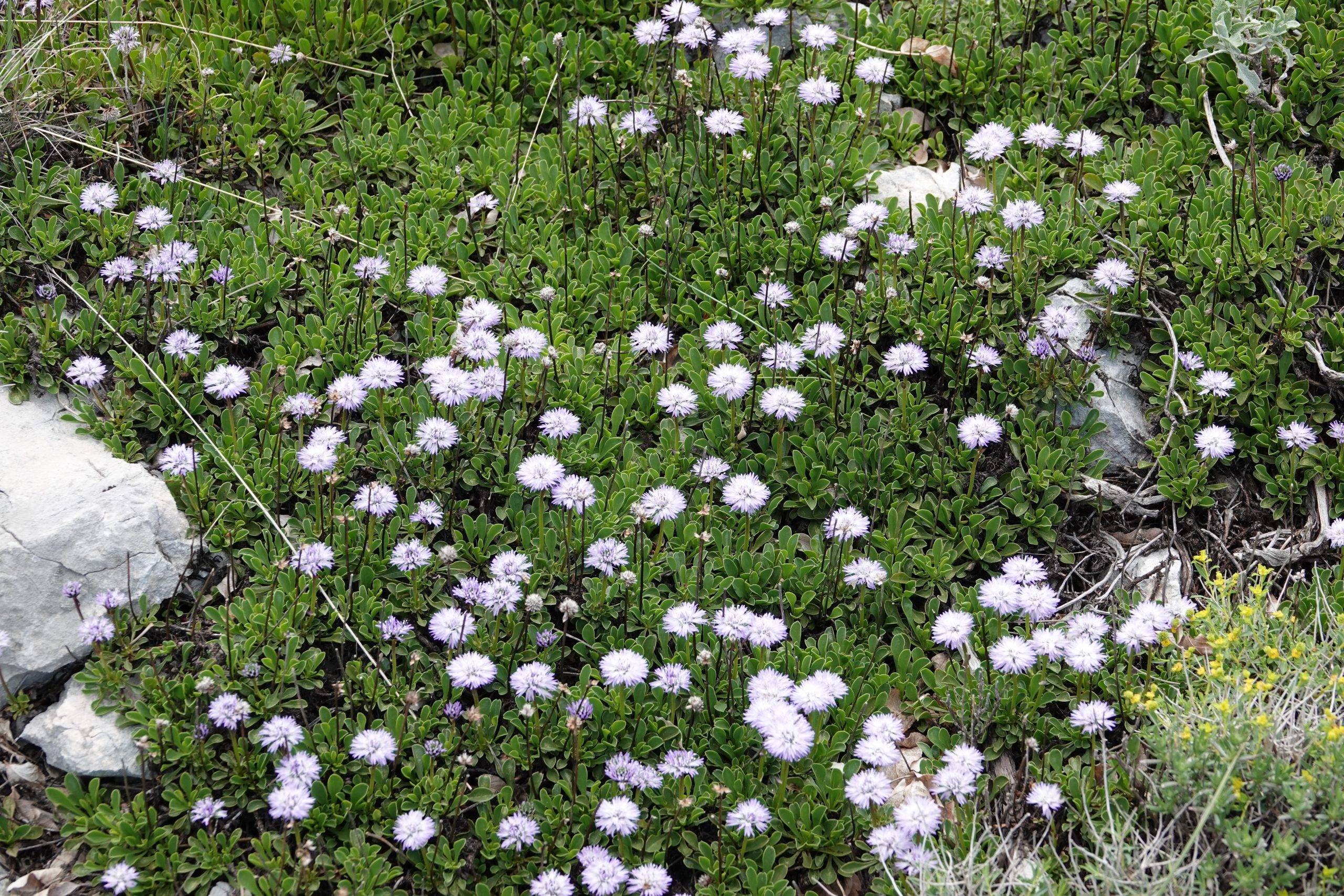
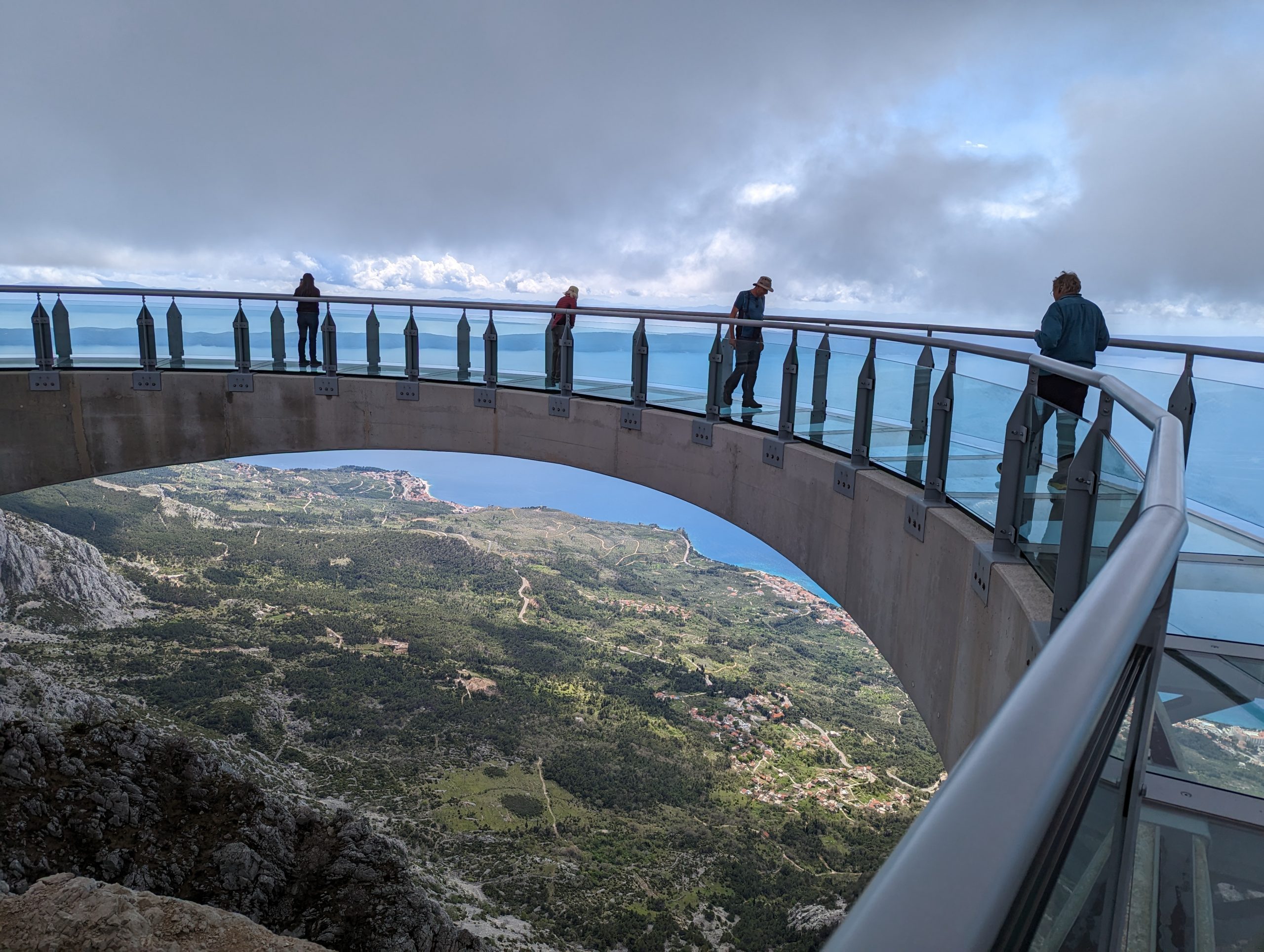
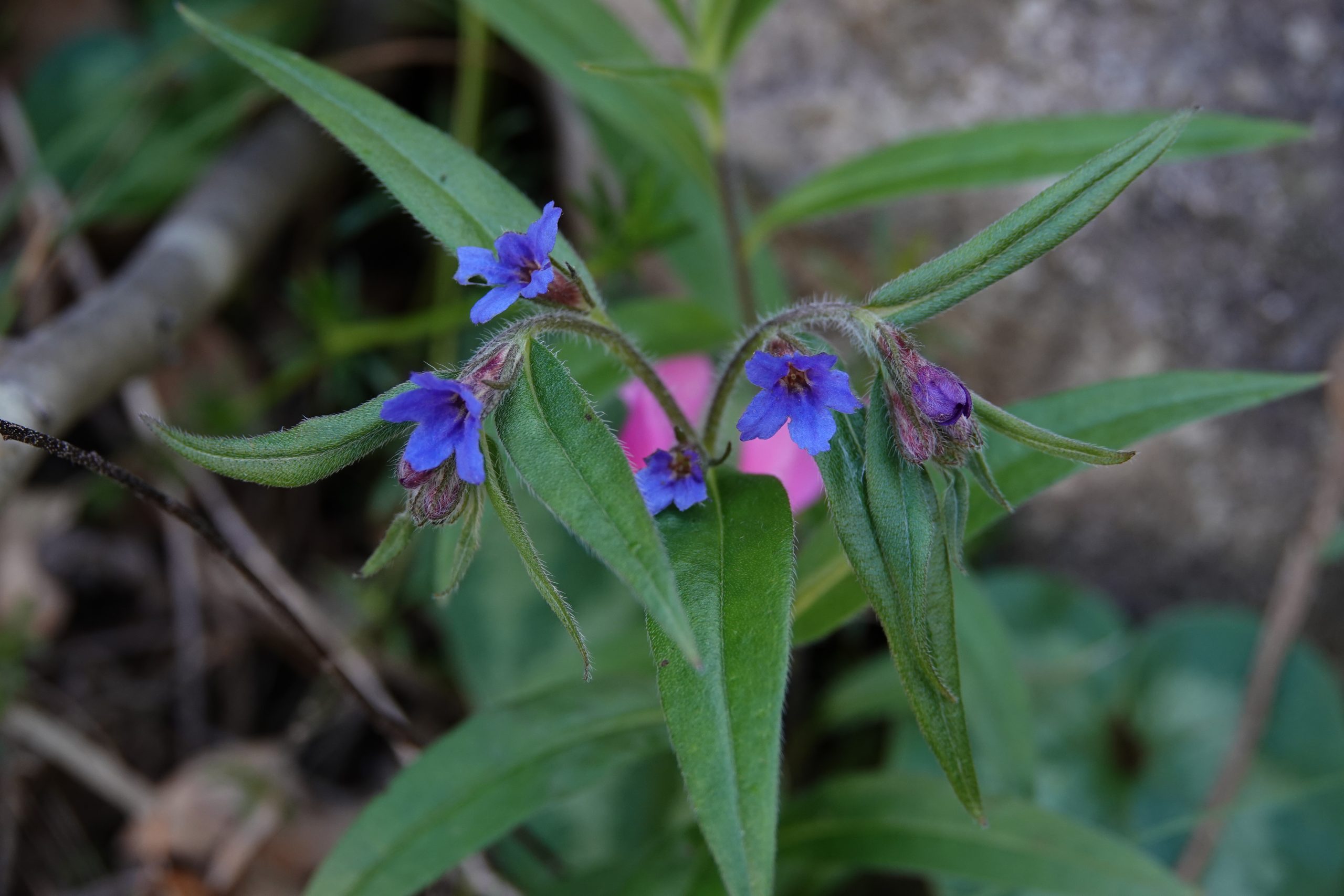
Day 5 Highlands
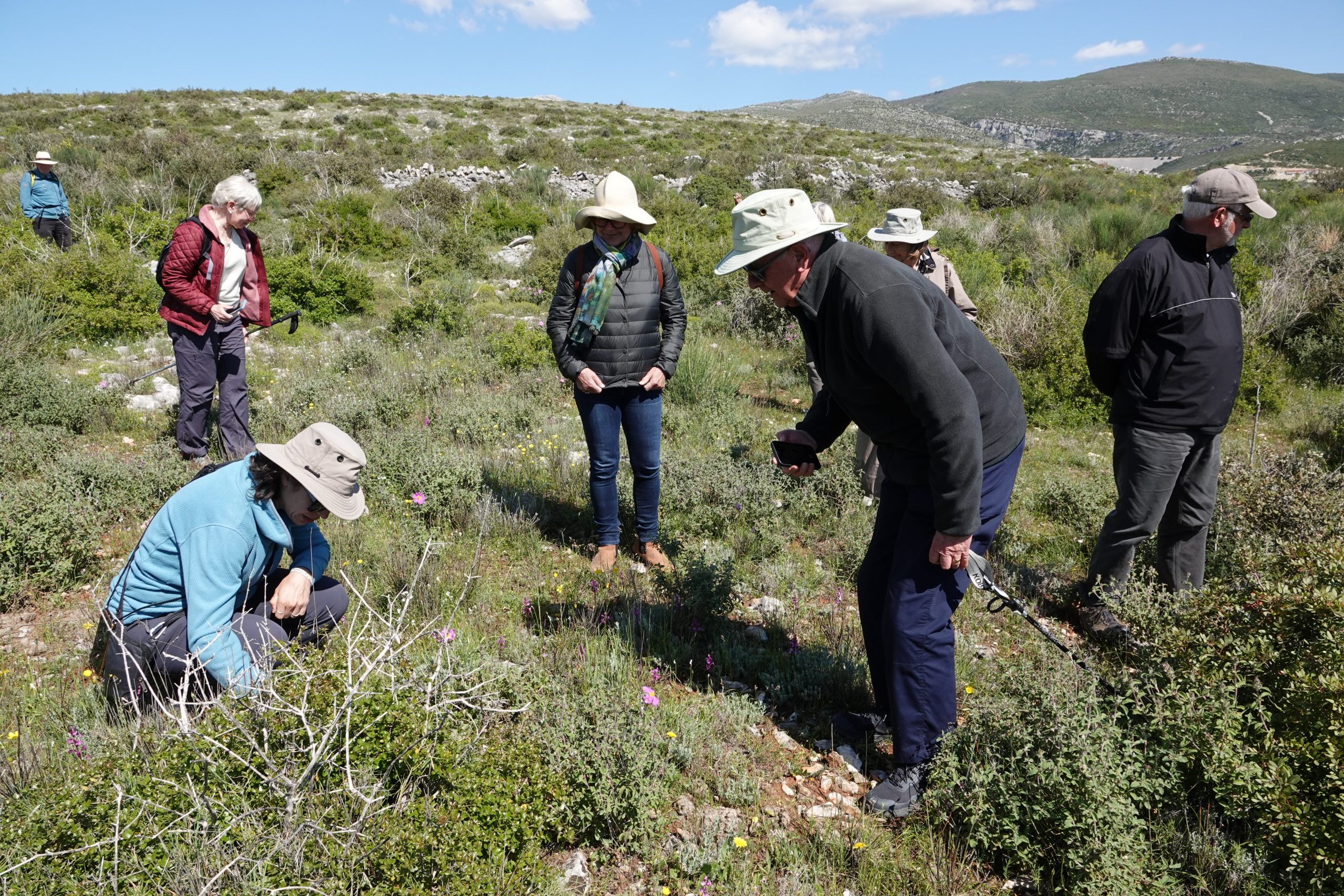

Today was a long drive, punctuated by stops at roadside fuel stations along the coast that had more than their share of botanical novelties, which we traded for the original plan to stop in the Velebit highlands. Featured at successive stops: Ophrys scolopax. Hymenospermum, Himantoglossum and Astragalus; Medicago orbicularis, Scorpiurus muricatus, Stachys cretica, Geranium molle, Reseda alba, Ophrys mammosa, Ornithogalum umbellatum, and several species of Convolvulus – althaeodes, cantabricus and elegantissima. And: Valantia hispida, Fumaria capreolata, Reseda alba and R. lutea, and the prize of the filling stations: Iris illyrica. We finally arrived at Plitvice National Park, and the nicest lodging of our trip: Hotel Degenija.
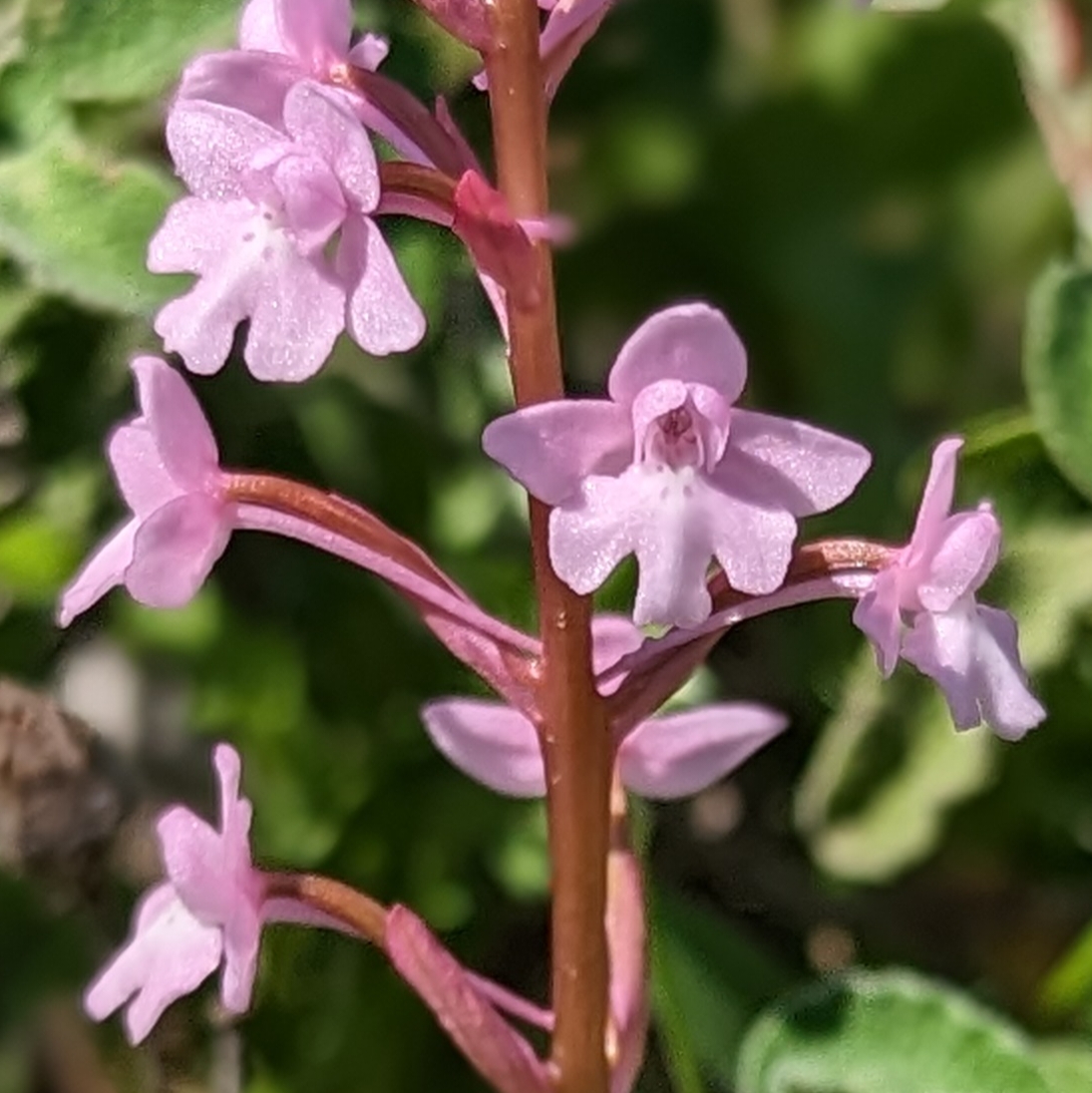
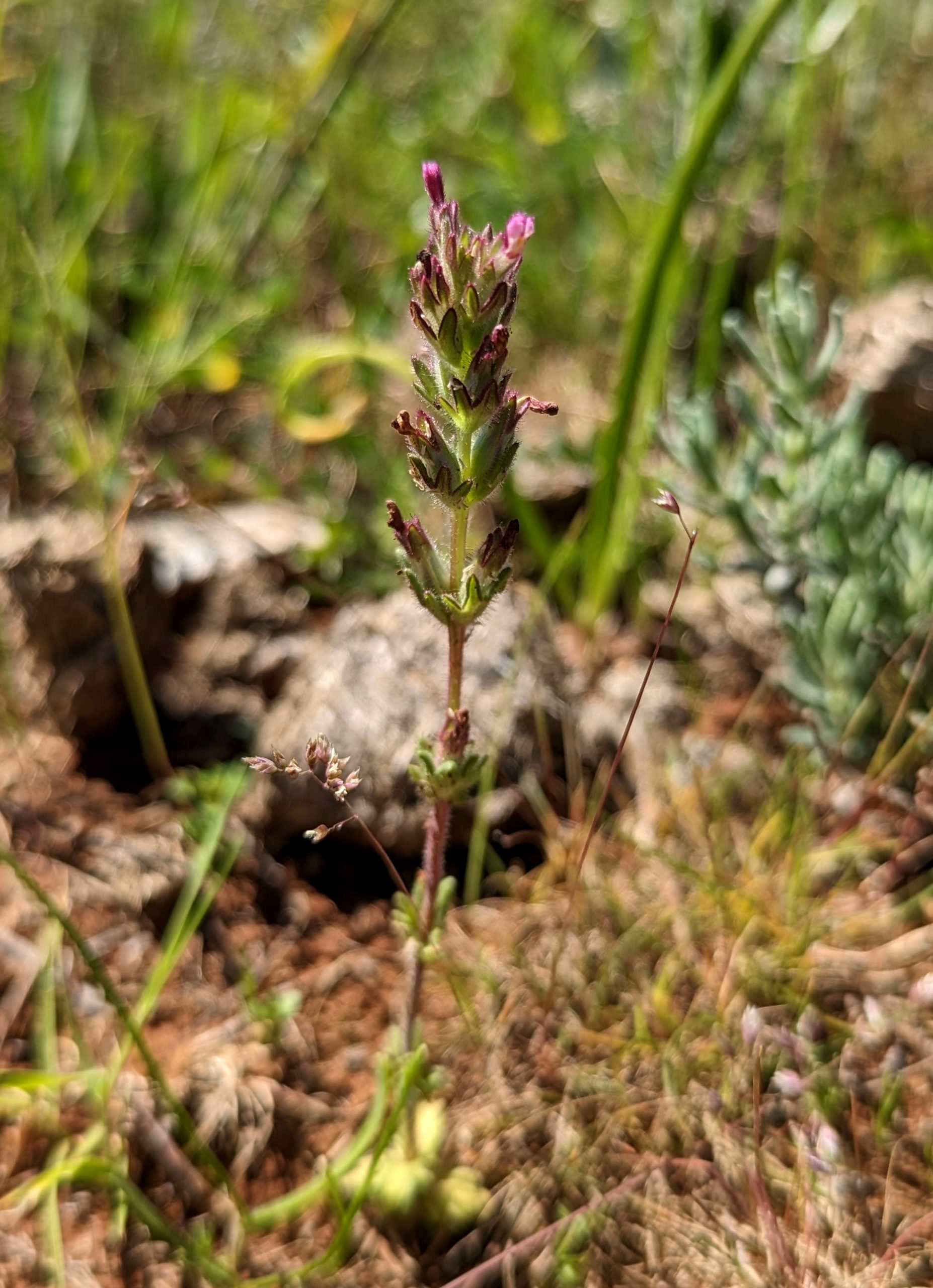
Day 6 Plitvice National Park
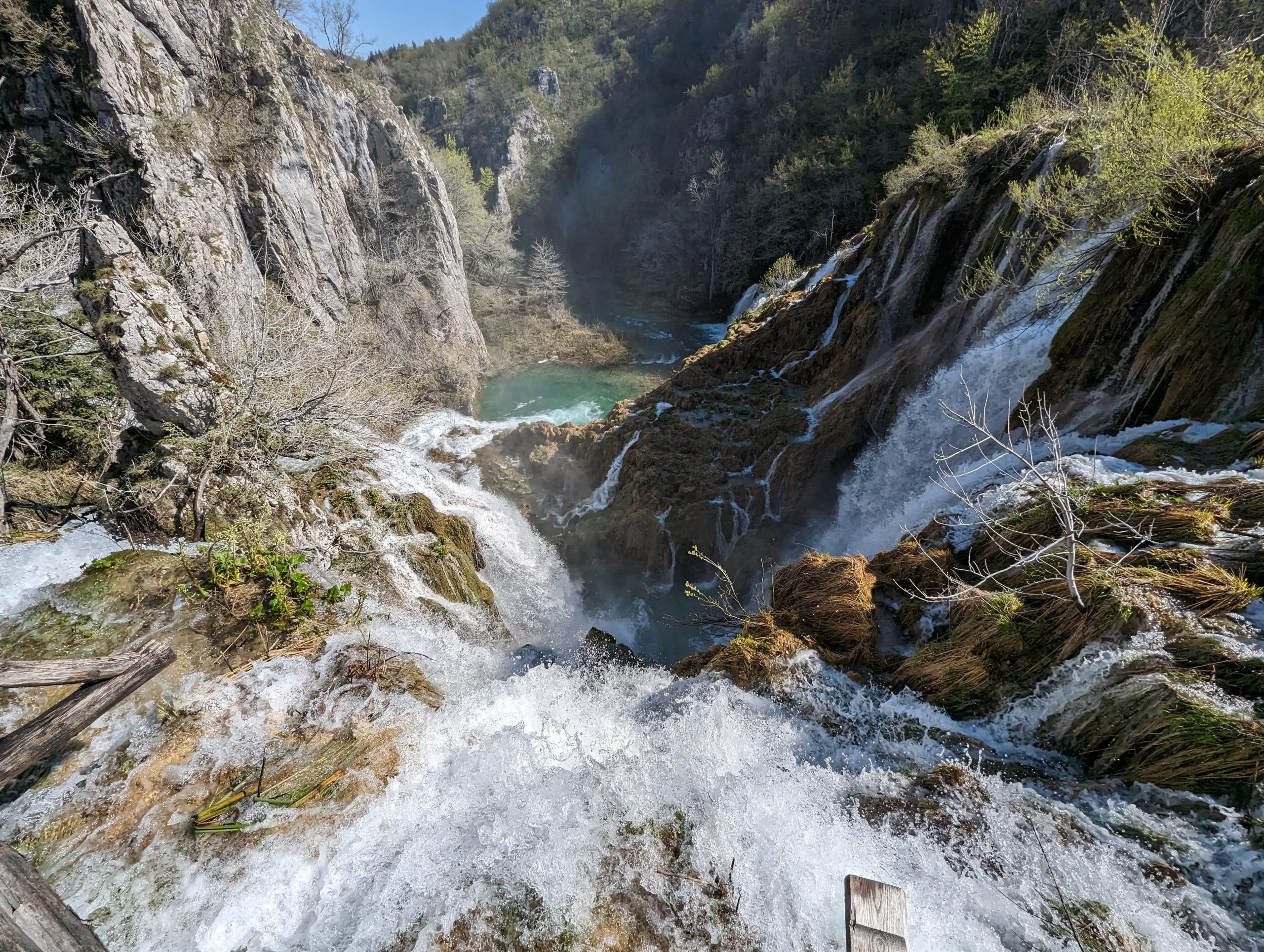
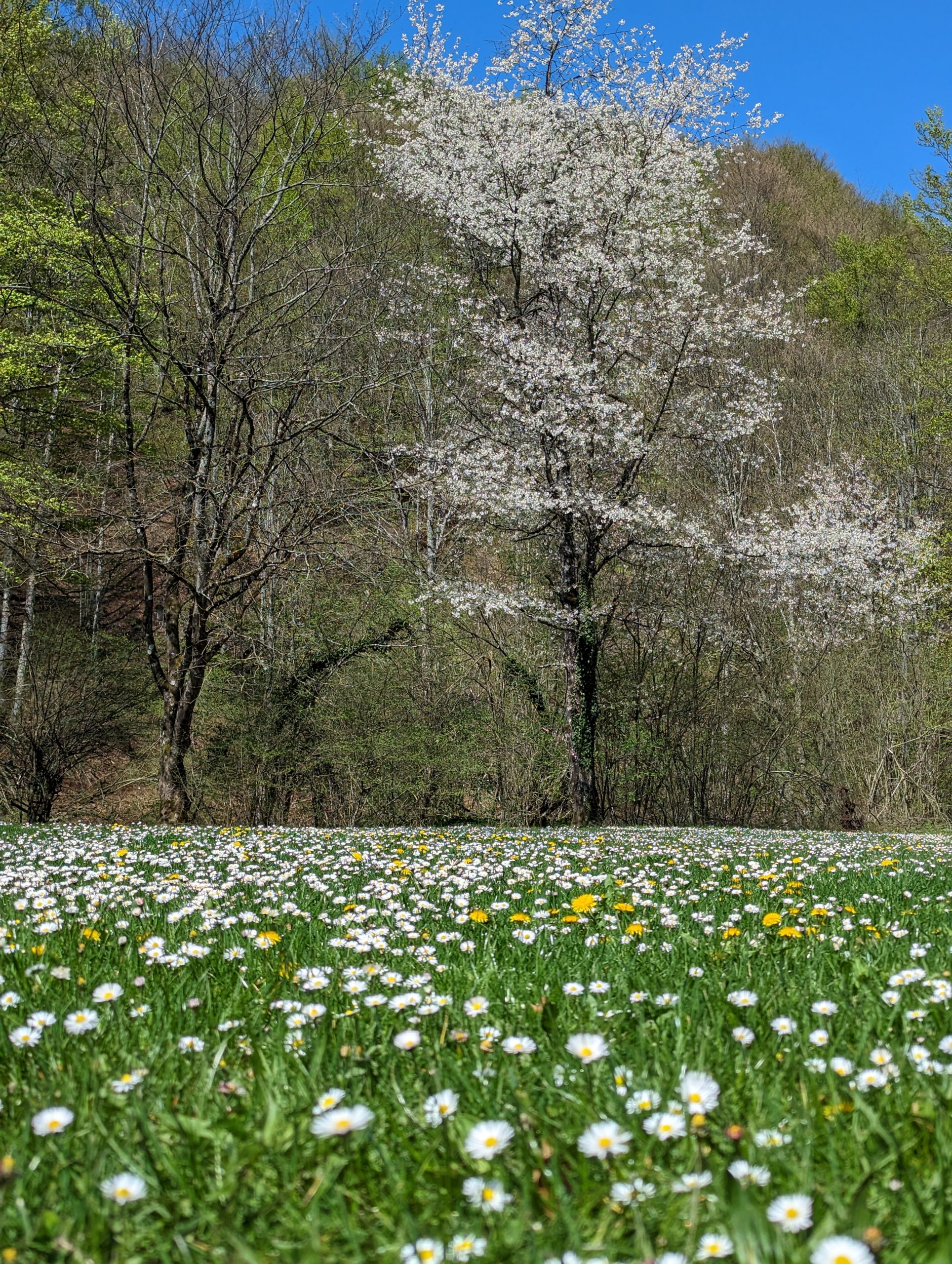
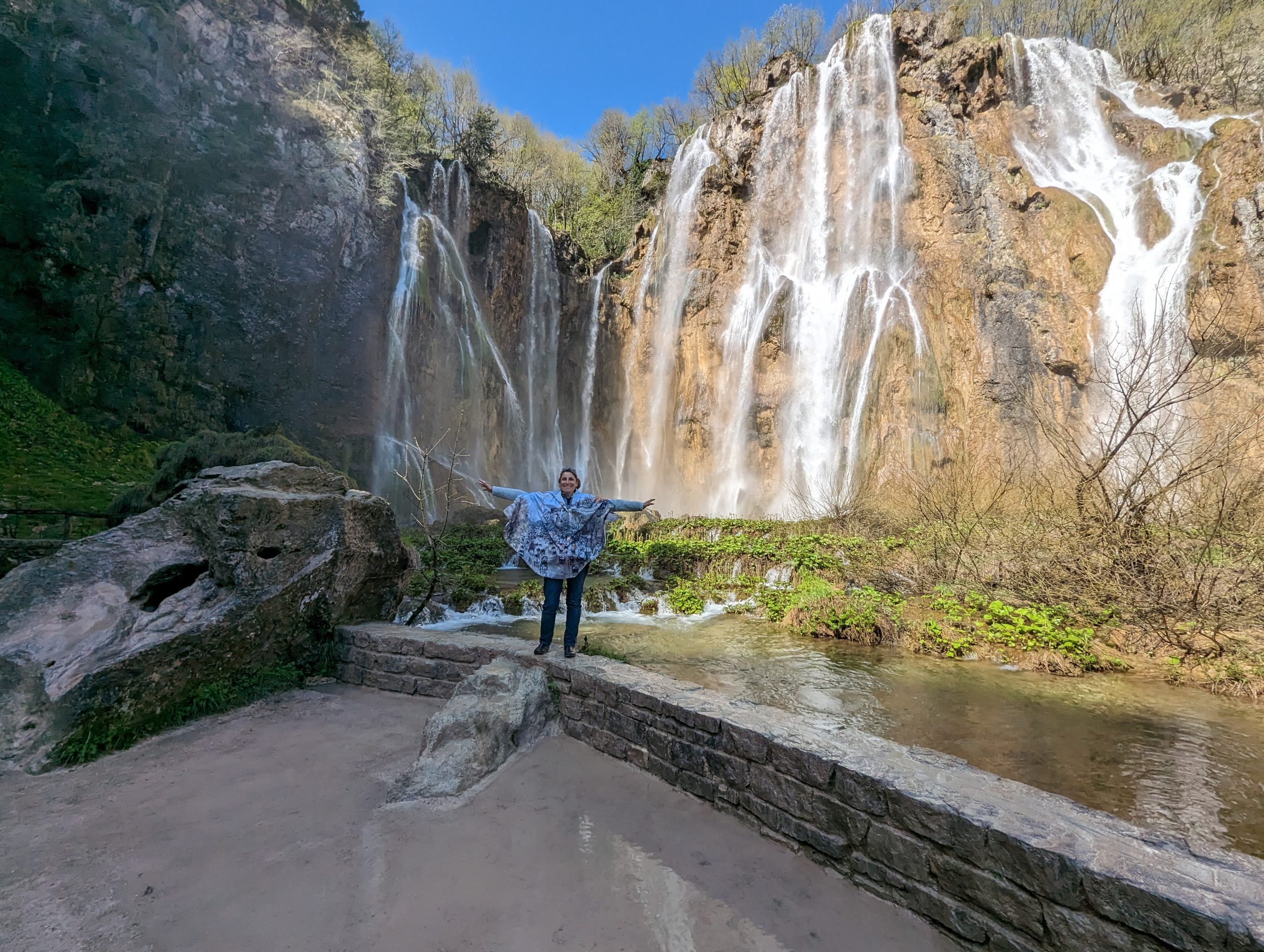
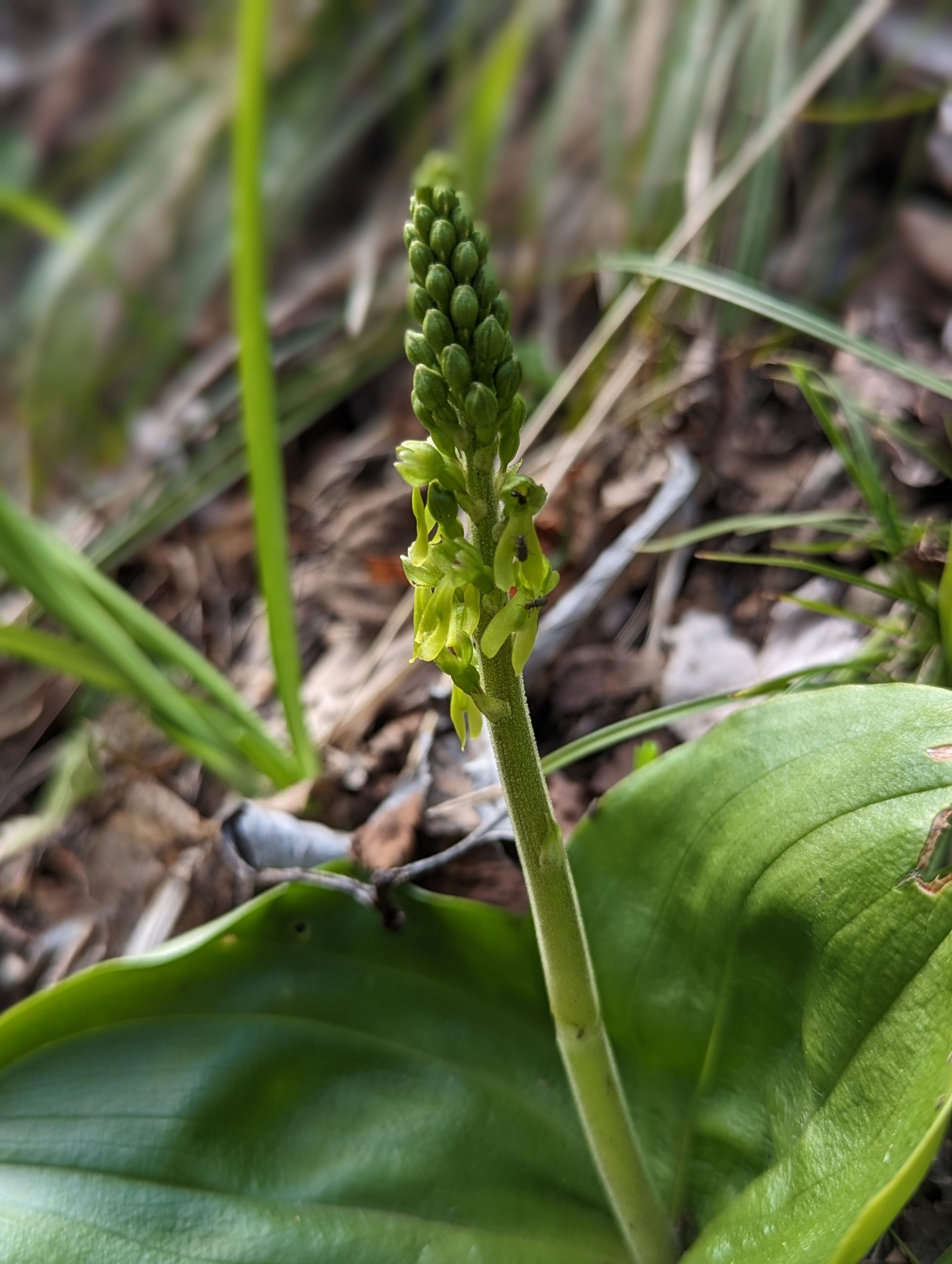

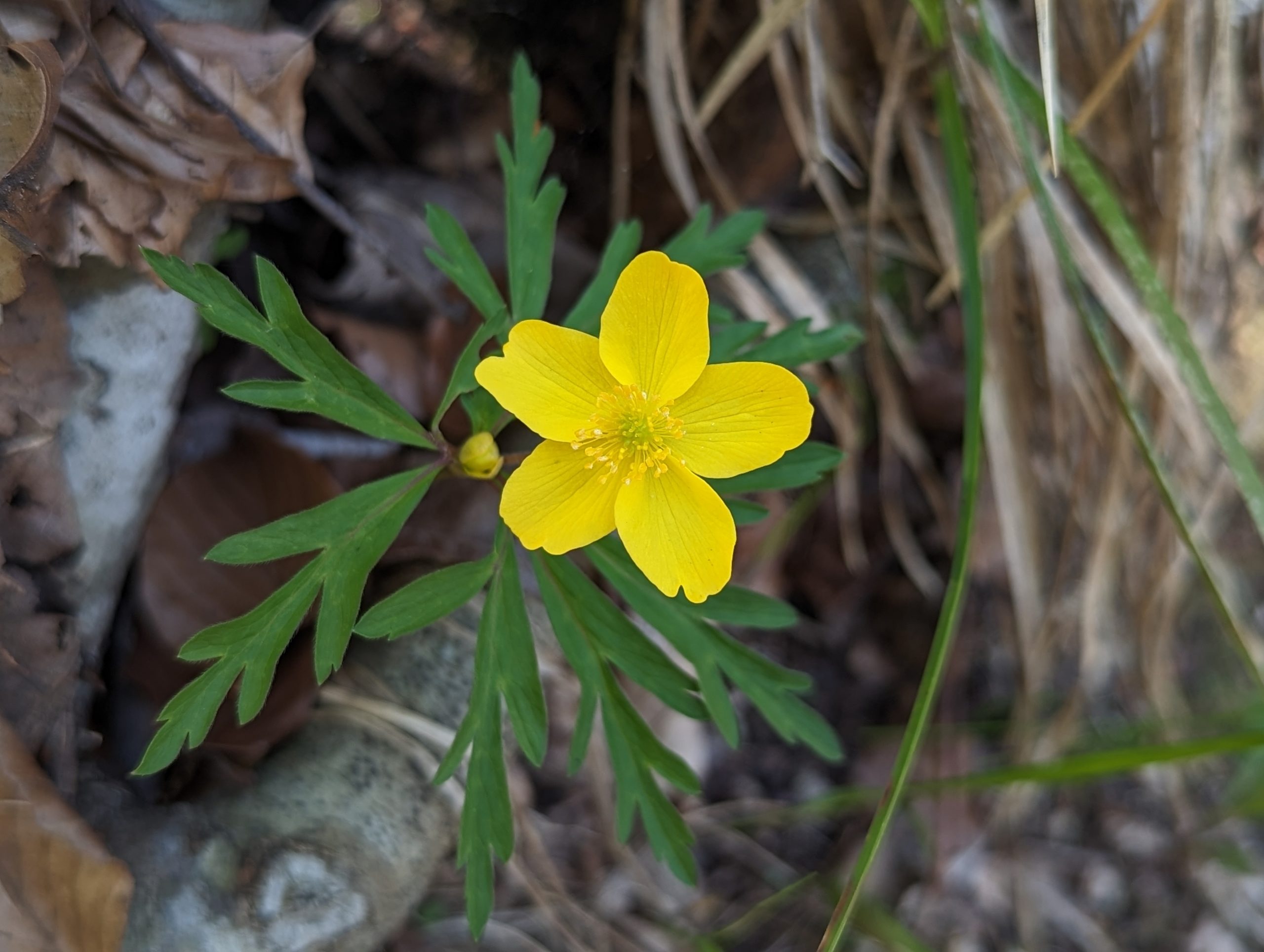
We were impressed if not astonished by the high cascading waterfalls which connect 16 lakes formed by natural tufa – also known as travertine – barriers that grow from chemical and biological interactions among bacteria, blue-green algae and alkaline water hypersaturated with CO2. The lakes are filled by runoff from the mountains, and the water levels descend through the cascades from an altitude of 636 to 503 metres over a distance of 8 km. Impressive! Our group, setting aside age and orthopedic impediments, chose to hike the longer of the trails through beautiful beech forests just leafing out. We chose the perfect week to see the sun shining through the translucent light green leaves. Inspecting the ground from time to time we saw Lamium orvala, Polygonatum odorum, Asarum europaeum, Petasites albus, Valeriana
Leontodon, Anemonoides ranunculoides, Equisetum, a new orchid – Listera ovata, the common twayblade. Also: Corydalis bulbosum, Anemonella thalictroides, and a log covered with Oxalis acetosella. The rock wall at the trailhead had the parsley fern, Cryptogramma crispa, and we found Arum maculatum and Cruciata laevipes near the parking lot. Another night in our nice hotel.
Day 7 Paklenica National Park and Ostrog
Our final full day had a great quantity of driving since we had to get from Plitvice down to Paklenica park, make a stop in Ostrog, near Split, and then drive the three hours from Split to Dubrovnik. Paklenica is another impressive mountain site, with limestone pinnacles that draw rock climbers from around Europe. We found the few parking spaces that hadn’t been taken by early-rising climbers, and again fought age and dodgy knees to hike up the mountain trail for our reward: carpets of Cyclamen repandum. After several people noted that we never see colour variants in that species, we found three light pink flowers. Our other impressive reward was a small stand of Orchis purpurea, by far the largest of the orchids seen on this trip. At lunch, Chris was surprised by Başak who had improvised a birthday cake – with candles and sparklers!! – and the group sang happy birthday and made him feel even better by not believing he could possibly be so old. After lunch we descended the mountain to Trogir, near Split, where we visited the botanical garden at the Ostrog Primary School – a remarkable collection of unusual plants built and cared for by the school. The group, minus Chris Earl who was returning from Split, continued on to the Hotel Lero and wrapped up with an evening in old Dubrovnik.
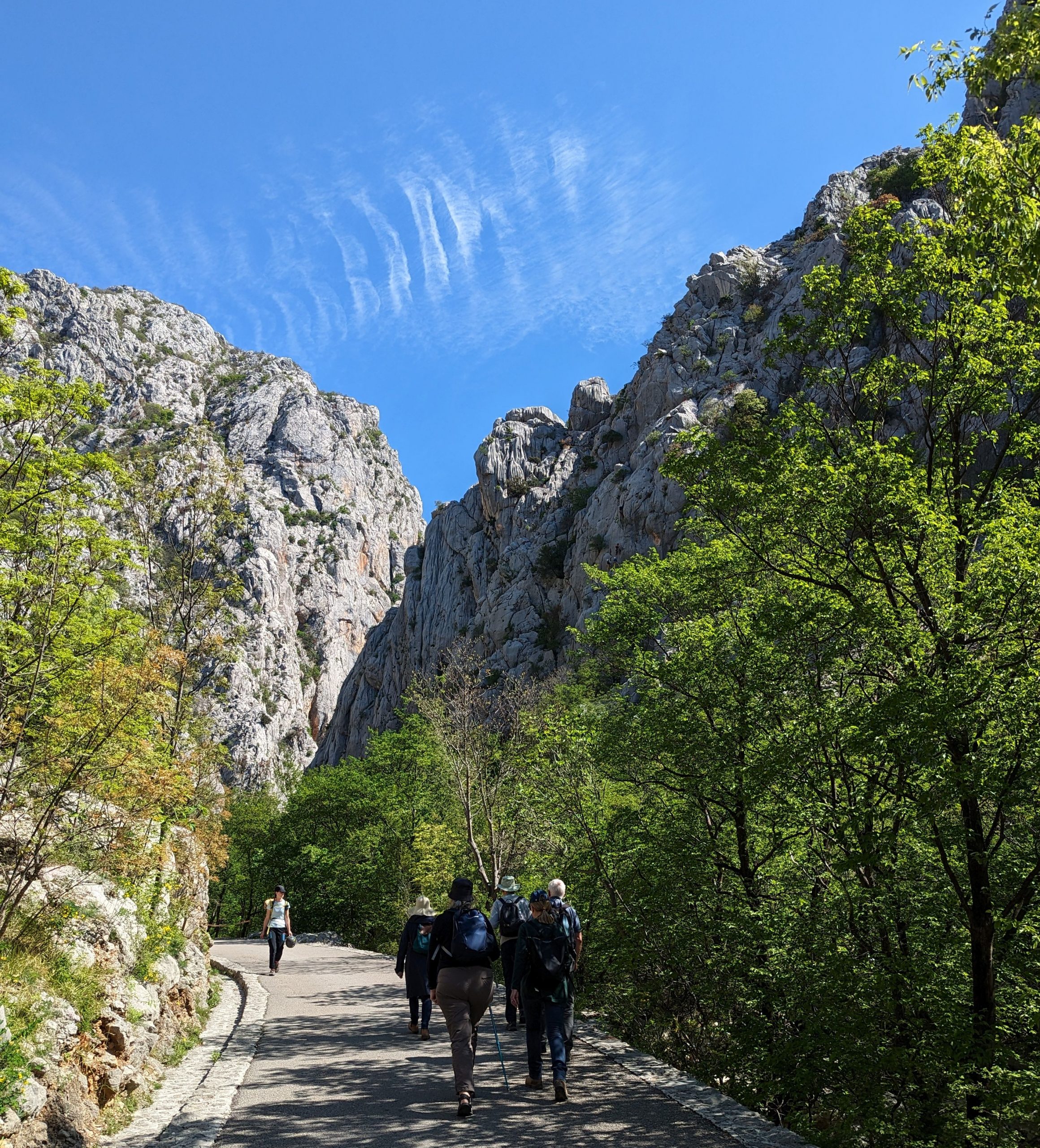
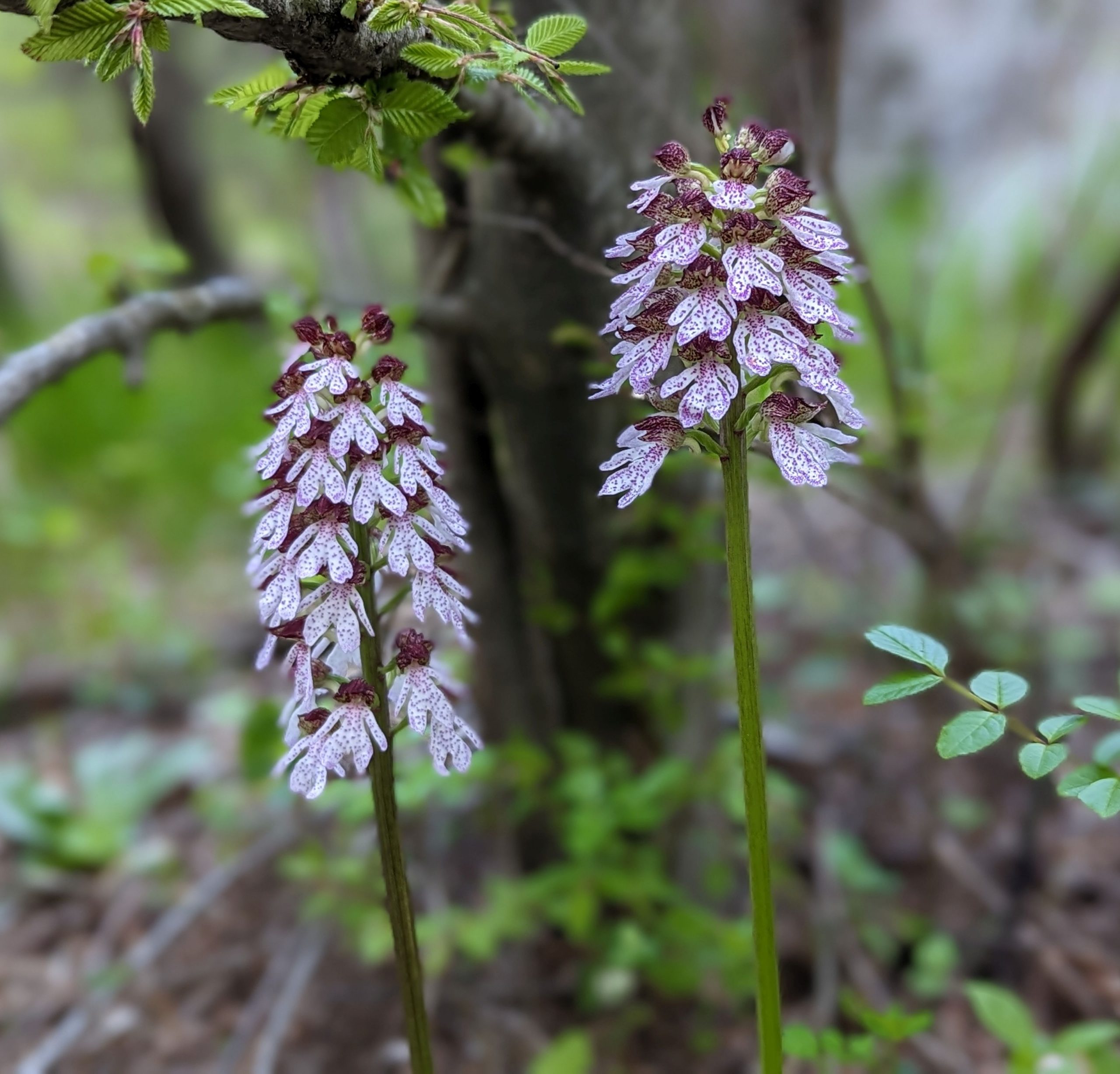
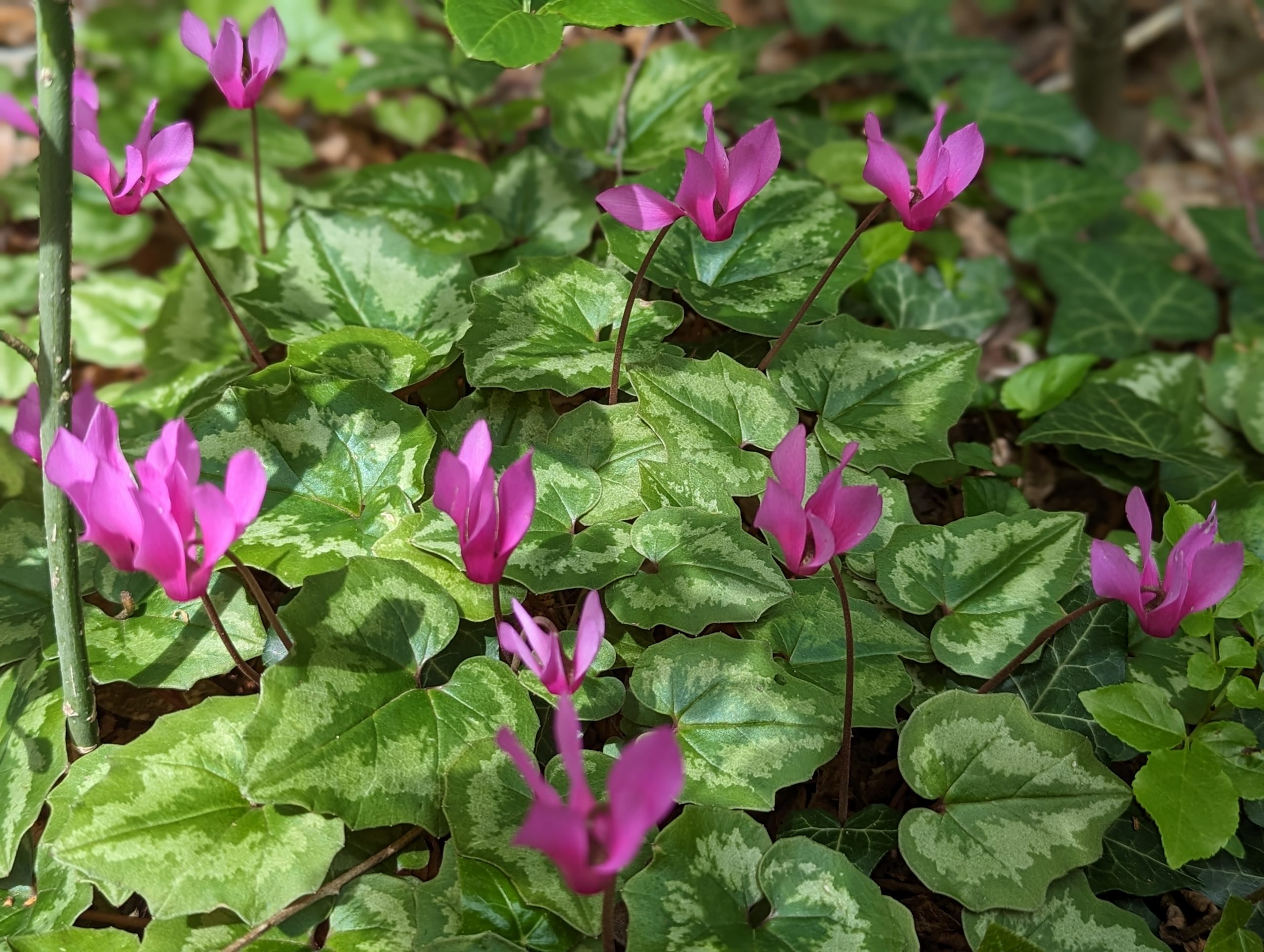
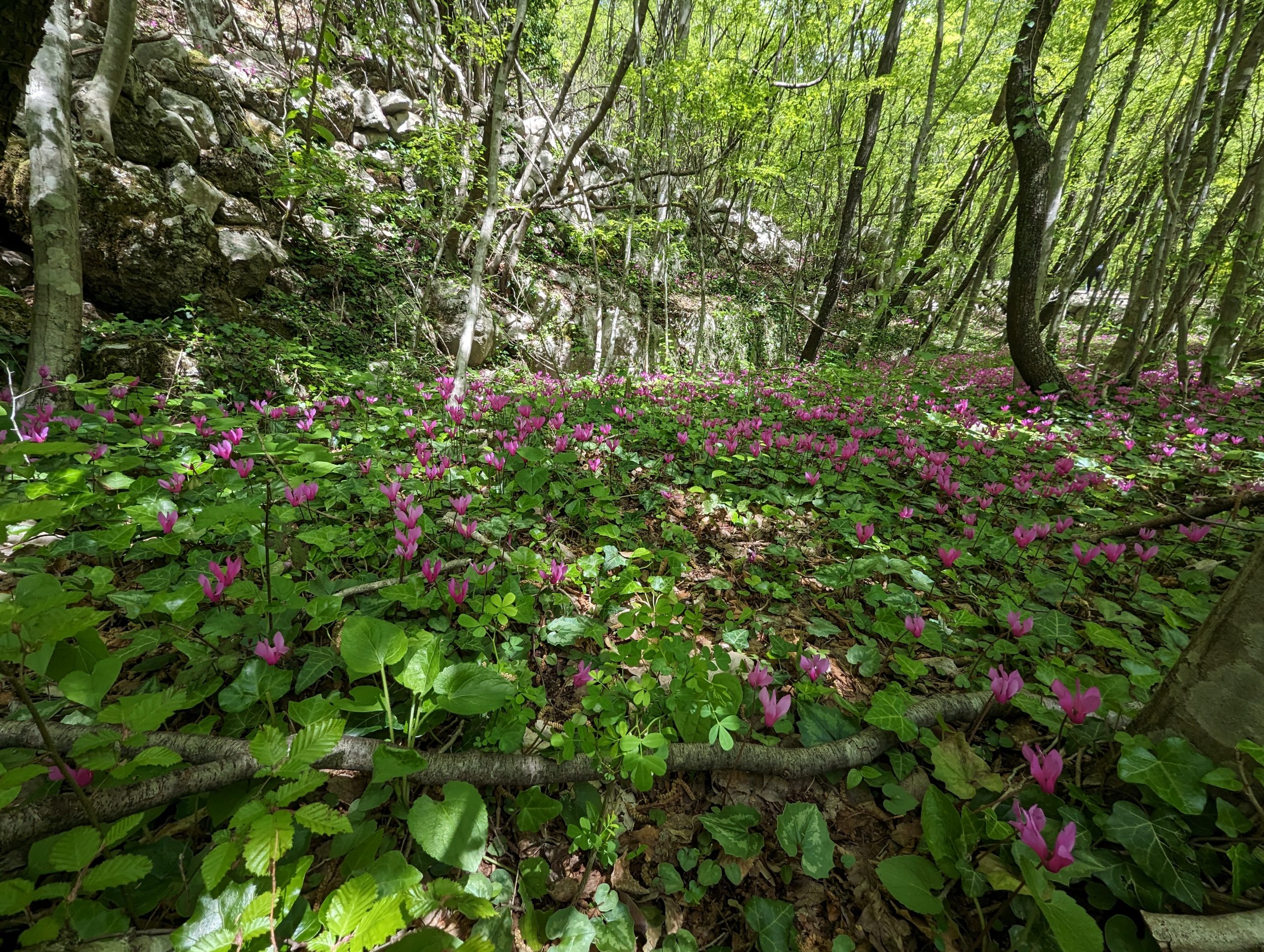

This report mentions only a fraction of the more than 200 species we saw on this trip. To experience them all you will simply have to come on the next MPG trip to Dalmatia with Başak and Chris.
Text and images: Chris Earl

